”I Believe We Should Go to the Moon"
By ROBERT R. GILRUTH
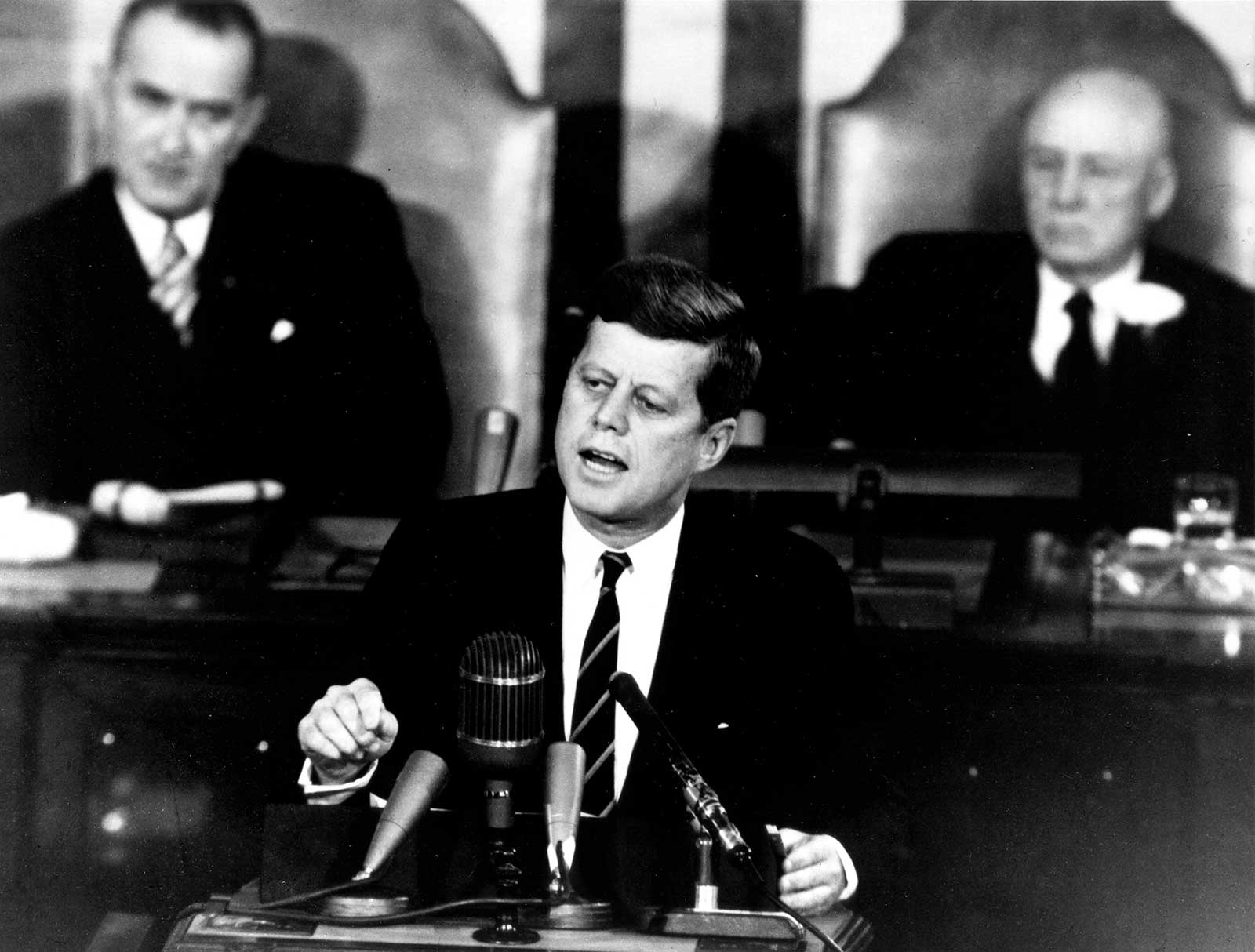
President Kennedy’s statement, “Fly man to the Moon in this decade,” was a beautiful definition of the task. There could be no misunderstanding as to just what was desired, and this clarity of purpose was one factor in the success of Apollo. By definition, it settled the old question of man versus instrument, and it provided a goal so difficult that new concepts, as well as new designs, would be required to accomplish it. Since the landing was geared to the decade of the sixties, the pace of the program was also defined, and a clear test of strength with the Soviets was implicit, if they chose to compete.
The President’s decision came after a long series of Russian firsts. They were the first to orbit the Earth, and the first to send instruments to the Moon; only a month earlier, Yuri Gagarin had become the first man in space. Alan Shepard had followed Gagarin into space by only a few weeks to become the first American in space. This feat had given America the feeling that, with a major effort, we might close the gap with the Soviets. The public was ready and willing to expand the space effort, and Congress did not bat an eye at Webb’s estimate that $20 to $40 billion could be required to go to the Moon. It was a popular decision, and the vote of the Congress on the Moon program was virtually unanimous.
But could it really be done? Flying man to the Moon required an enormous advance in the science of flight in a very short time. Even the concepts of manned spaceflight were only three years old, and voyaging in space over such vast distances was still just a dream. Rendezvous, docking, prolonged weightlessness, radiation, and the meteoroid hazard all involved problems of unknown dimensions. We would need giant new rockets burning high-energy hydrogen; a breakthrough in reliability; new methods of staging and handling; and the ability to launch on time, since going to the Moon required the accurate hitting of launch windows.
Man himself was a great unknown. At the time of the President’s decision we had only Alan Shepard’s brief 15 minutes of flight on which to base our knowledge. Could man really function on a two-week mission that would involve precise maneuvers, including retrofire into lunar orbit, backing down and landing on the Moon, lunar take-off, midcourse corrections on the way home and, finally, a high-speed reentry into Earth’s atmosphere, performed with a precision so far unknown in vehicle guidance? We would have to do intensive work on spacesuit development, since flying to the Moon would be unthinkable without giving astronauts the capability of exploring the Moon on foot, and perhaps later in some roving vehicle. These men would have to be trained in the complex problems of flying and navigating in space, and we would need a cadre of men with space experience before setting out on such a voyage.
On the spacecraft side, we felt that the concepts already under trial in Project Mercury would be applicable for the command and service module, but we would need new sources of onboard power such as the fuel cell. The landing on the Moon would require precision guidance, as well as good visibility from the cabin for the astronauts, and a graduated control of rocket thrust heretofore undeveloped. The state of the art in tracking and communication would be severely tested. Precision navigation techniques using inertial systems would be necessary, and high-speed computing for solving complex navigation problems involving the celestial mechanics of three-body systems. The mass ratios involved in the spacecraft, particularly the lunar lander, would require the ultimate in materials. Safety factors would have to be stretched in order to give the low structural weights required. And in the spacecraft, as well as the launch vehicle, new orders of reliability would be required for so long a mission so far from home.
The Moon itself was a great unknown. Its surface, its mass distribution, and whether the lunar soil would be firm enough to support a landing craft were all open to conjecture. Finally, a master plan had to be evolved. The launch site had to be selected, roles and missions of government centers had to be determined, and a choice had to be made between the various concepts of how to go to the Moon, whether to use Earth-orbit rendezvous, direct ascent, or the most controversial of all, lunar-orbit rendezvous. A government team had to be built that, working closely together with leaders of industry, would manage the development and production of the launch vehicles, the spacecraft, and facilities for tests and operations. Not only would all these things have to be done in the short time available, but many would have to be worked out at the beginning, during what I have called “the year of decisions.”
WHAT WE HAD TO BUILD ON
Many of our key people in Apollo I, particularly on the spacecraft side, grew out of the old NACA, the National Advisory Committee for Aeronautics. We had the heritage of the airplane to work from, with all its methods of design, test, and operation. For the ballistic-missile programs of the early 1950s we had helped to develop solutions for reentry problems that were to have direct application to spacecraft design. But it was the launching of Sputnik I in October 1957 that put a new sense of value and urgency on the things we were doing. When one month later, the dog Laika was placed in orbit in Sputnik II, I was sure that the Russians were planning for man in space.
It seemed to me that the United States would surely enter into space competition with the Soviet Union, and flying man into space would be a legitimate national goal.
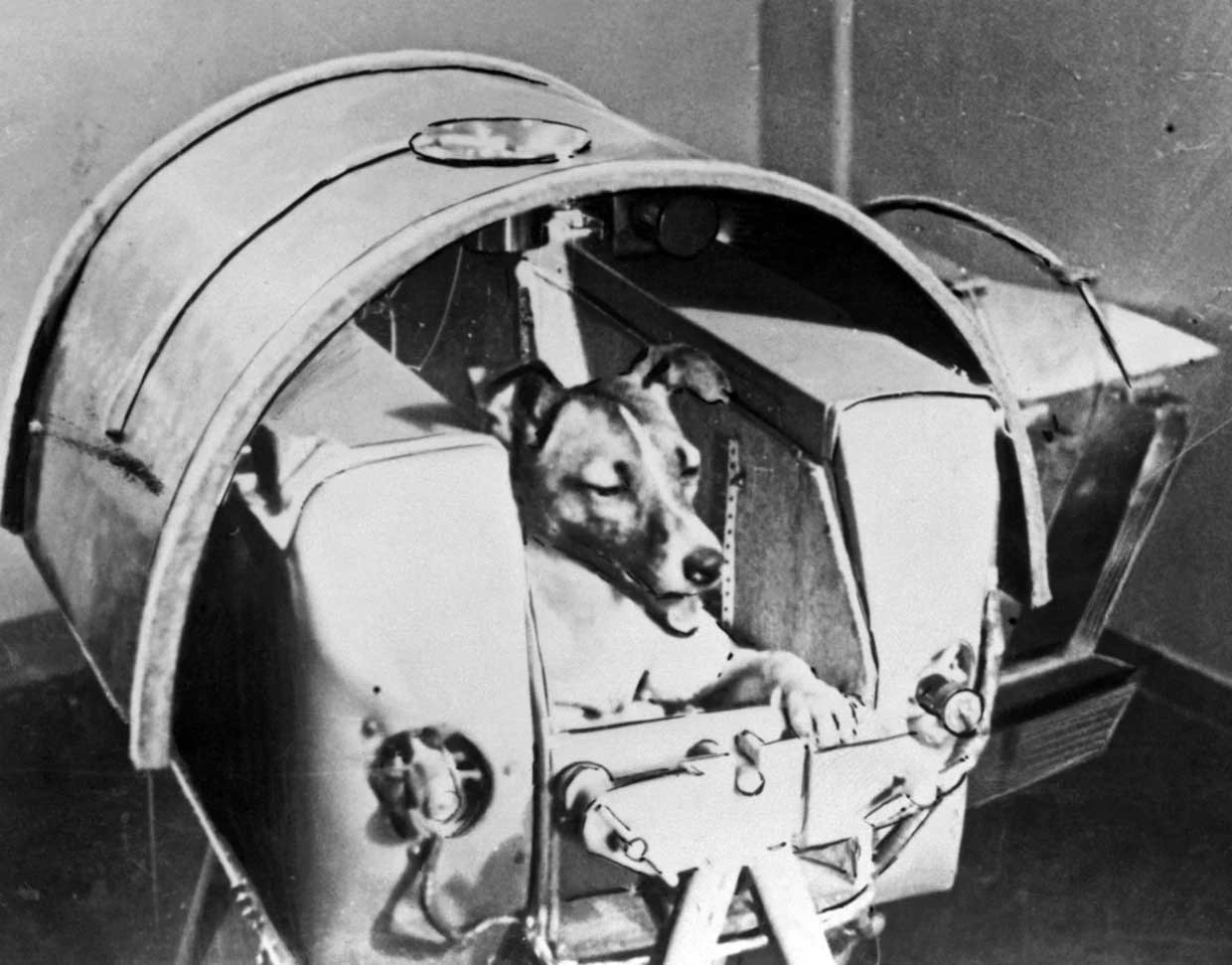
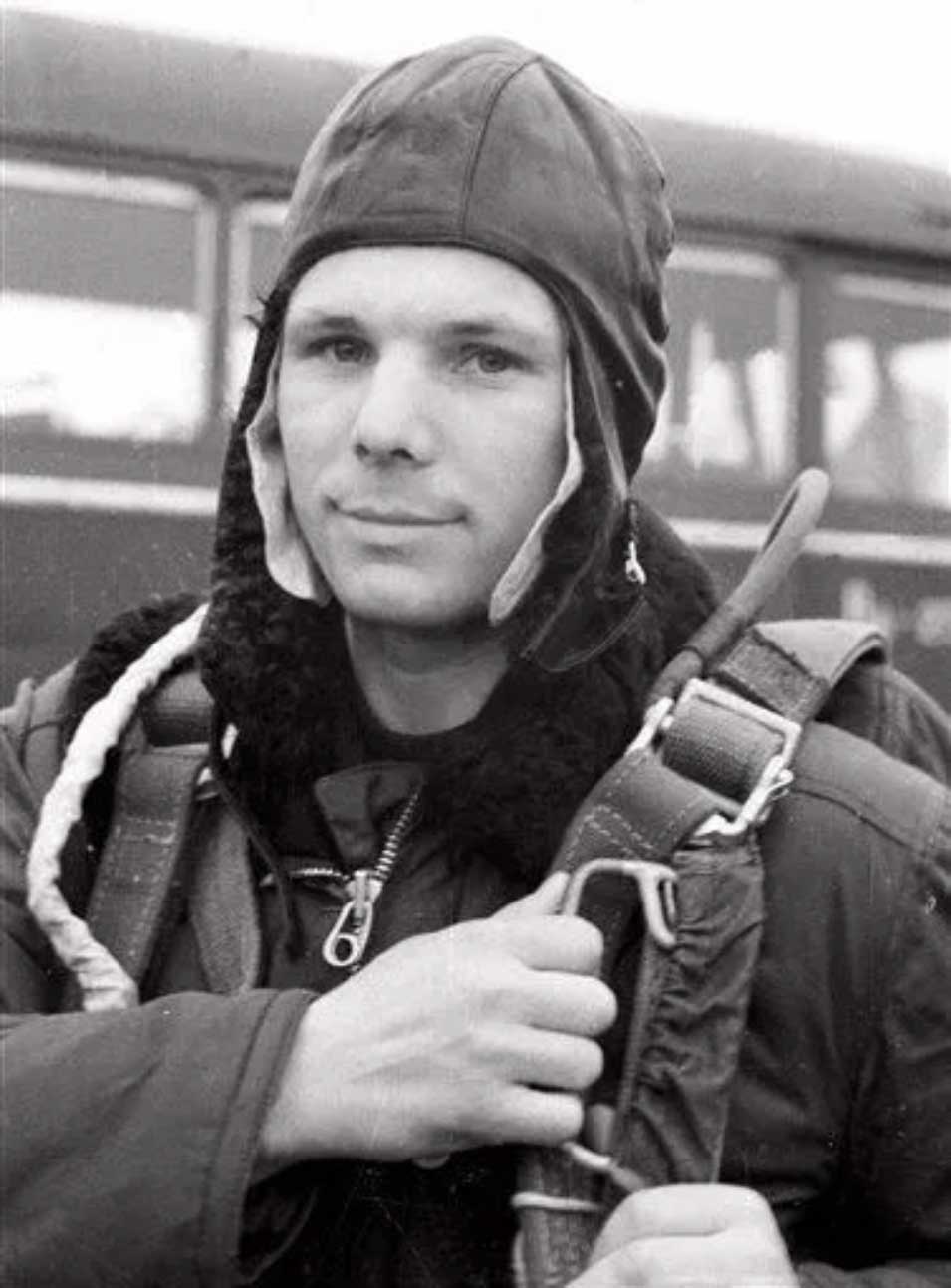
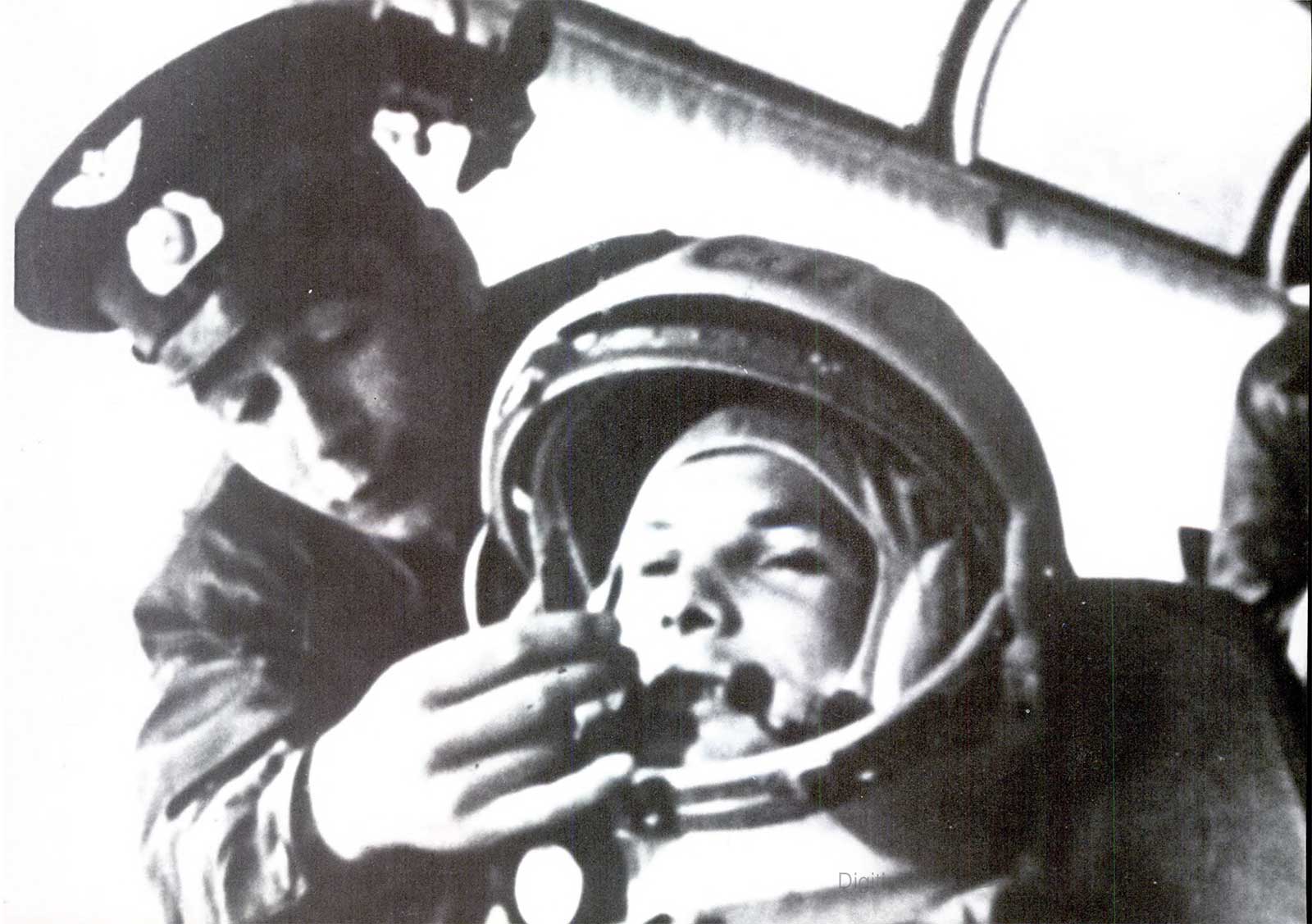
Thus it was that our small but creative group in NACA started working intensively on spacecraft-design problems. Most of the effort in those early days had been directed toward hypersonic gliders, or winged vehicles, that would fly at high Mach numbers and perhaps even into orbit. But our views were changing, and Harvey Allen of the Ames Laboratory was the first, to my recollection, to propose a blunt body for flying man in space. He suggested a sphere to enclose the man and said, “you just throw it”, meaning, of course, launch it into space with a rocket. In March 1958, Max Faget presented a paper that was to be a milestone in spacecraft design. His paper proposed a simple blunt-body vehicle that would reenter the atmosphere without reaching heating rates or accelerations that would be dangerous to man. He showed that small retro-rockets were adequate to initiate reentry from orbit. He suggested the use of parachutes for final descent, and small attitude jets for controlling the capsule in orbit during retrofire and reentry. His paper concluded with a statement that: “As far as reentry and recovery are concerned, the state of the art is sufficiently advanced to proceed confidently with a manned satellite project based upon the use of a blunt-body vehicle.”
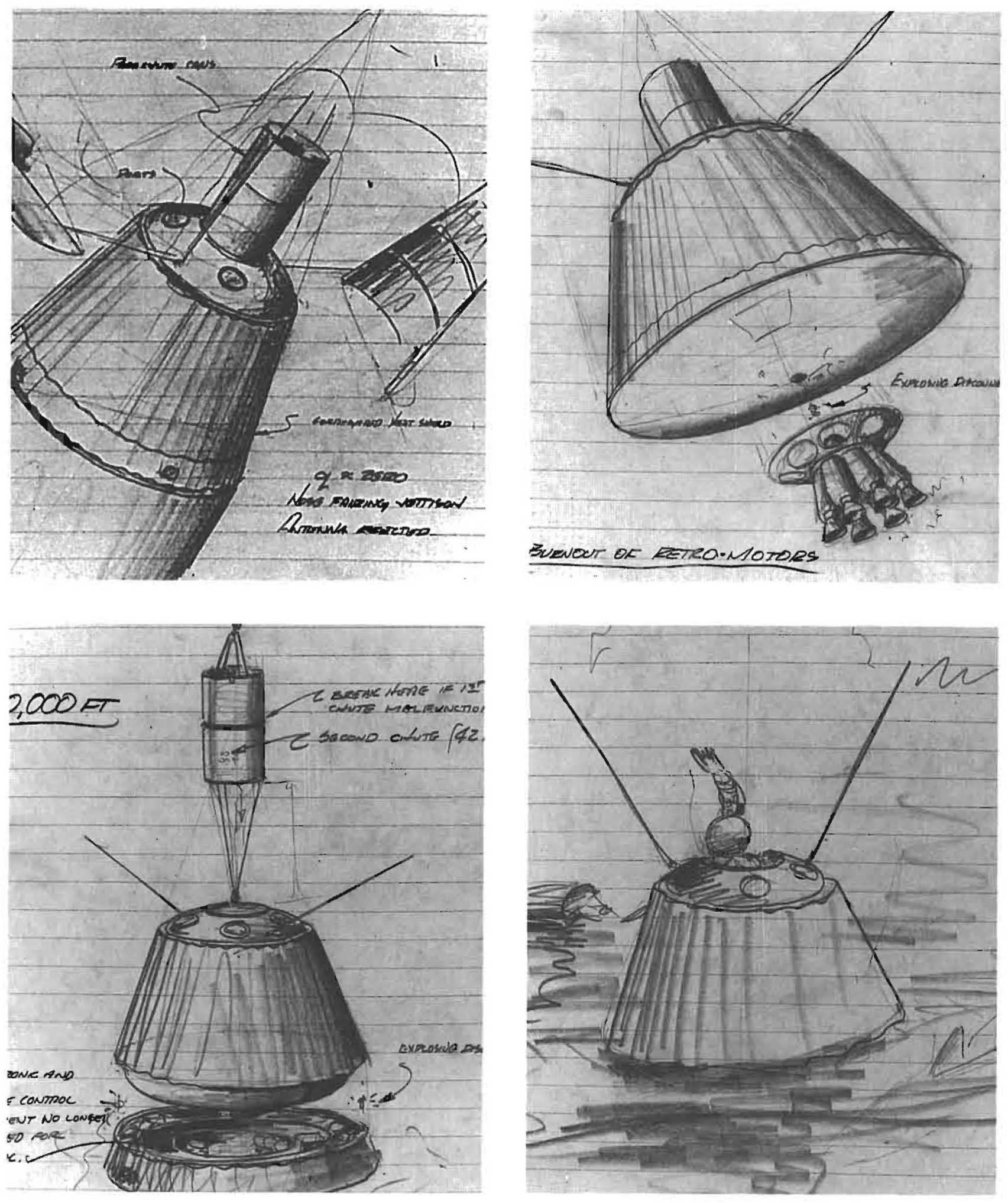
Starting with the formation of NASA in October 1958, intense efforts were undertaken to create a manned space vehicle and flight organization capabie of flying man in orbit around the Earth. The plans for this vehicle were based on the blunt reentry body proposed earlier by Harvey Allen and Max Faget. A special team, the Space Task Group, was formed at Langley Field, Virginia, to manage this effort, and the McDonnell Aircraft Corporation won the competition to build what would be the Mercury spacecraft.
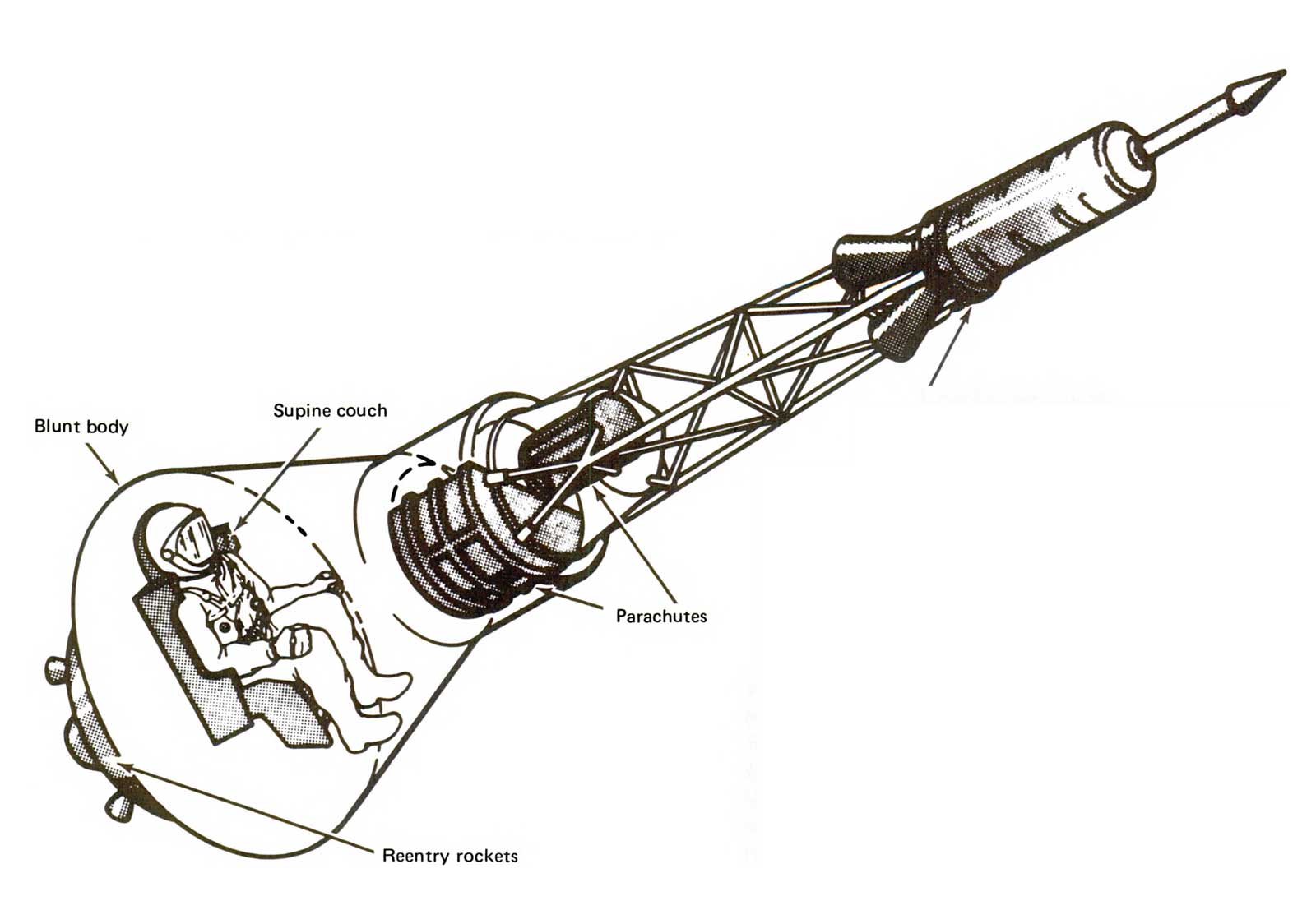
The heat shield was a slightly convex surface constructed of plastic and fiberglass material that would give out gas under intense heat, protecting itself from destruction. The conical afterbody was covered by shingles of high-temperature alloy similar to that used in turbine blades of jet engines. These shingles were insulated from the titanium pressure shell and they dissipated their heat by radiation. Parachutes were by far the lightest and most reliable means of making the final descent to Earth, and the parachute section was protected from heat by shingles of beryllium. Another key factor in the Mercury design was the supine couch for the astronaut. There had been considerable doubt that man could withstand the g-loads associated with rocket launching and reentry, particularly in abort situations. The form-fitting couch gave such well-distributed support that man could withstand over 20g without injury or permanent damage.
This concept of the Mercury capsule and, indeed, the whole plan for putting rnan into space was remarkable in its elegant simplicity. Yet its very daring and unconventional approach made it the subject of considerable controversy. Some people felt that such a means for flying man in space was only a stunt. The blunt body in particular was under fire since it was such a radical departure from the airplane. It was called by its opponents “the man in the can,” and the pilot was termed only a medical specimen. Even Dr. Dryden, at the time the Director of NACA, labeled one early ballistic-capsule proposal the same as shooting a young lady from a cannon. However, he approved the Project Mercury design, since it was by then a complete system for orbital flight. The Mercury spacecraft and, in fact, Gemini and Apollo as well, were designed to land on the water because of the large water area which lay east of Cape Canaveral over the South Atlantic. lf an abort were required during launch, the spacecraft would have to survive a water landing; and this therefore became the best way to make all landings. It was easier to attenuate landing-impact forces in water landings, although the spacecraft was designed to survive a land impact without harm to flight crews.
The first astronauts were brought onboard the Mercury program in April 1959. They were volunteer military pilots, graduates of test pilot schools. Each was required to have a bachelor’s degree in engineering or equivalent, and at least 1500 hours of jet time. Of the first group of 60 candidates called to Washington to hear about the program, more than 80 percent volunteered. All were of such high caliber that selection was difficult. However, I picked seven: three Air Force, three Navy, and one Marine, on the basis that the Mercury program would probably not give more than this number a chance to fly. These men were true pioneers. They volunteered at a time when our plans were only on paper and when no one really knew what the chance of success was. One had to respect their motivation and courage.
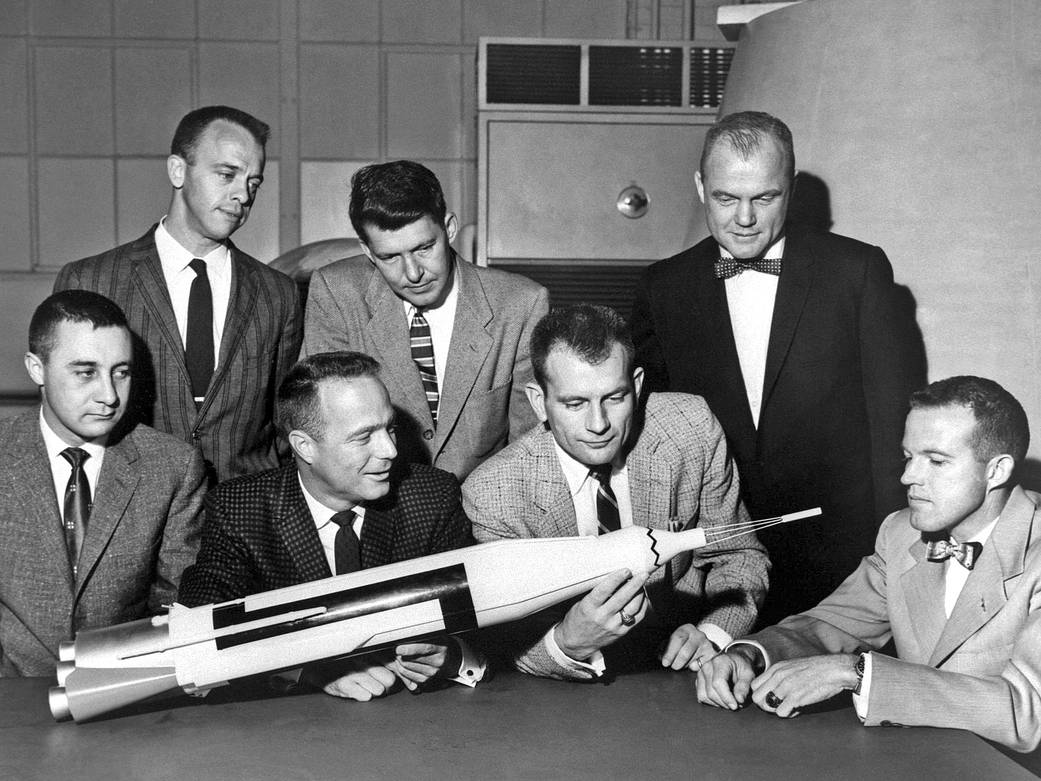
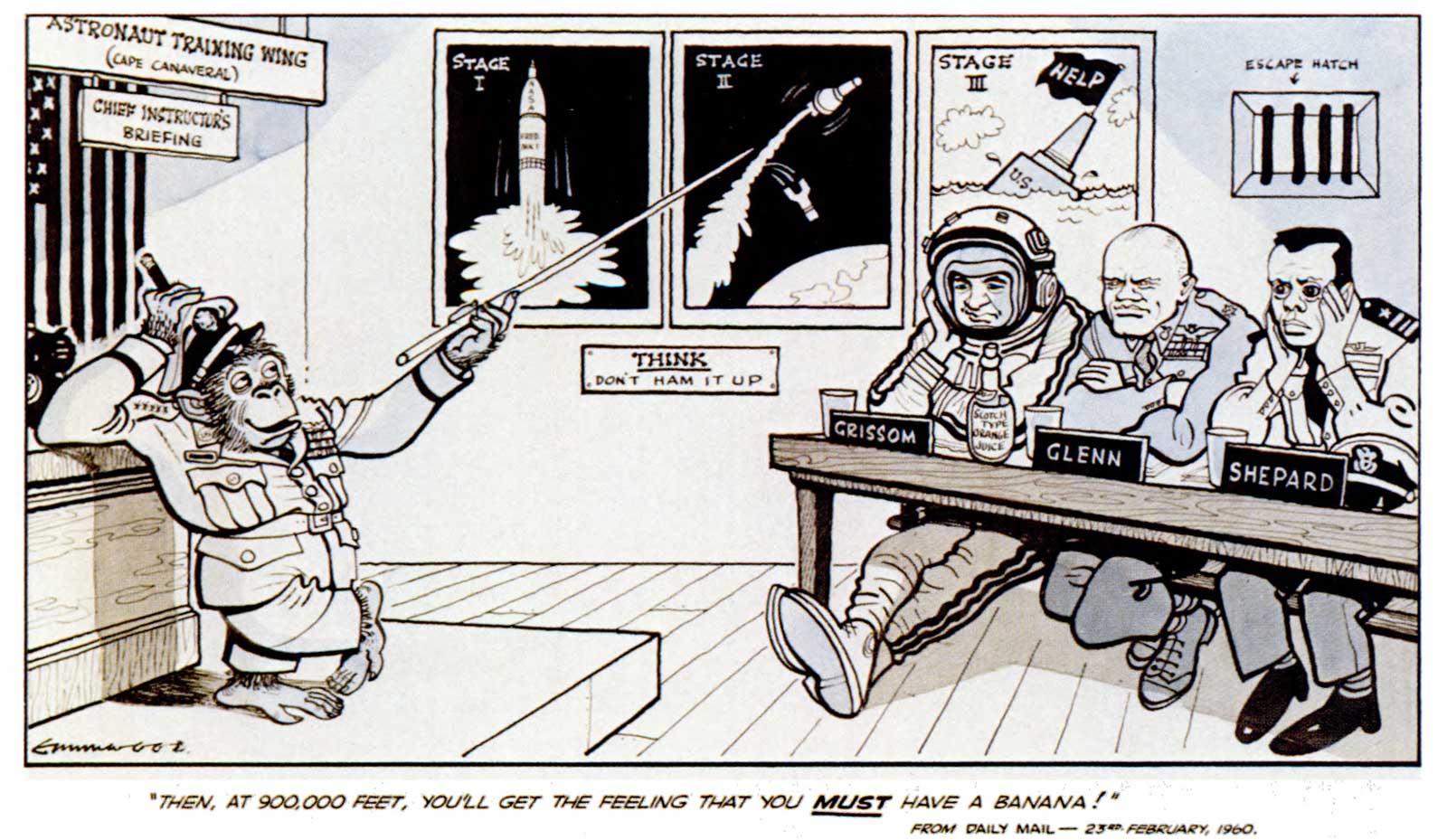
(From Daily Mail, 23rd February 1960)
Animals flew first, paving the way for man. Chimpanzees were physiologically manlike and easily trained. The Air Force’s Aeromedical Field Laboratory provided them.
We were to have many spectacular successes as well as failures in the Mercury program. However, we were able to learn from each failure, and fortunate in having these failures early in the program so that the astronauts and the animal passengers as weil were flown without mishap when their time came. Perhaps our most spectacular failure in Mercury came to be known as the “tower flight”. In this sad affair, the escape tower, the parachutes, and the peroxide fuel were all deployed on the launching pad in front of the domestic and international press. A relatively simple ground-circuit defect in the Redstone launch vehicle caused the main rocket engine to ignite and then shut down after a liftoff from the launching pad of about two inches. The capsule events were keyed to the engine shutdown after having been armed by stage liftoff, as this was the normal procedure for sequencing unmanned flights. As you might expect, it was very difficult to explain this spectacular series of events to the working press, and to officials in Washington.
In those days an animal, in our case a chimpanzee, had to precede man into space. The flight of the chimpanzee Ham was a major milestone in our program. Here again we had some problems in the Redstone launch vehicle that resulted in a delayed pickup of the spacecraft, and water entered the spacecraft as a result of landing damage to the pressure shell. However, the animal performed admirably at zero gravity and was picked up unharmed. Ham became quite famous and proved to be a really lovable little fellow as well as a true pioneer.
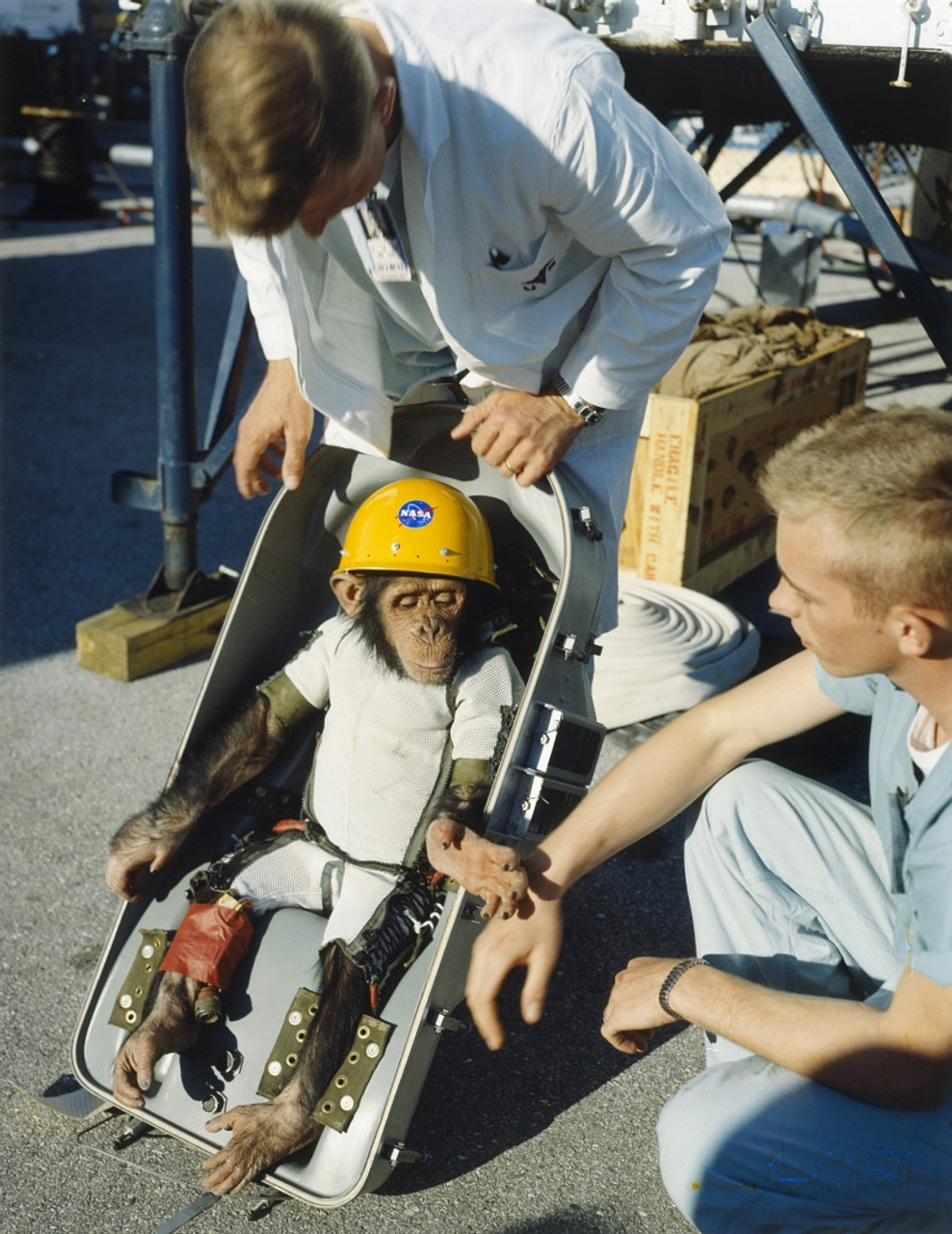
All the things that were wrong with Ham’s flight were corrected by hard work on the ground without further flight tests. We were now ready for our first manned suborbital flight and I recommended to Dr. Dryden and Mr. Webb that we were ready to go ahead. However, the Marshall Center required one more unmanned flight with the Redstone for booster development. It was during this period that the Russians sent Yuri Gagarin aloft in the Vostok spacecraft to become the first man in space.
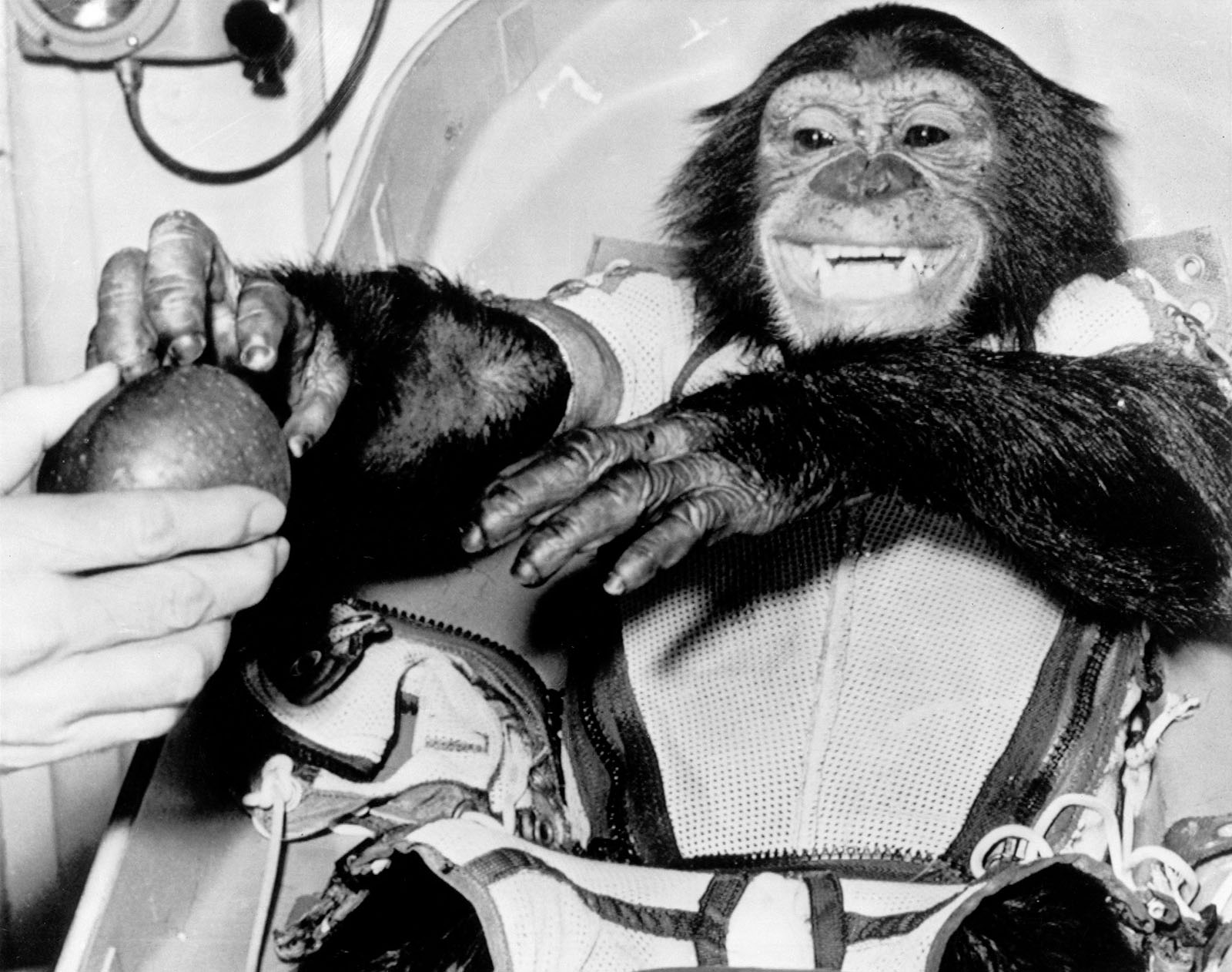
All of these events were occurring at the time that President Kennedy and his staff were taking over from the outgoing Eisenhower administration. Dr. Glennan, the Administrator of NASA during its first years, gave way to James Webb, who was to be the Administrator until October 1968. With the change came other events. Project Mercury was examined by the new head of the President’s Science Advisory Committee, Dr. Jerome Wiesner, and a staff of medical and physical scientists. Our hearings before the Wiesner Committee went reasonably well until we came to convincing the doctors that it was safe for man to fly at zero gravity. Even though Ham, the chimpanzee, had fared well and was completely normal after his flight, the medical men on the committee were reluctant to accept this evidence that man could stand even 15 minutes of zero gravity. They were even concerned whether man could stand the mental stress of lying on top of a rocket and being blasted into space. However, we were able to convince Mr. Webb and Dr. Dryden that the program was sound, and they, in turn, convinced the President and his staff. It was at this time that Ed Welsh, Executive Secretary of the Space Council, remarked while Mr. Kennedy was pondering the impact of a failure, “Mr. President, can the country stand a success?”
On May 5, 1961, Alan Shepard became the first American to blast off from Cape Canaveral in a flight that was to be of great importance to our future programs. His flight in Freedoni 7 was followed by Gus Grissom in a Mercury capsule called Liberty Bell 7. Orbital flights of the Mercury capsule followed with a mechanical man and a chimpanzee named Enos. We were ready for manned flight into orbit. We were extremely fortunate to have six successful Atlas launch vehicles in a row to complete the Mercury program. John Glenn’s Mercury-Atlas mission on February 20, 1962, was America’s first orbital flight. We were to learn much from the flights of Glenn, Carpenter, Schirra, and Cooper that helped us in planning for the lunar program.
The exposure of man to zero gravity in these early manned flights was perhaps among the greatest medical experiments of all time. All the Mercury astronauts found the weightless state no particular problem. All returned to Earth with no medical difficulties whatever. This finding was so fundamental and straightforward that its importance was missed by many medical critics at the time. It now became simply a question of how long man could withstand weightlessness, and detailed medical measurements were made to cast light on how the body compensated for the new environment. Zero gravity produced some problems in locomotion and habitability, but not in man himself. We believed that even the longest flights of the future would probably require only methods of keeping the human body properly exercised and nourished in order to prevent a different reaction on returning to the gravity of Earth.
THE YEAR OF DECISIONS (JUNE 1961 TO JUNE 1962)
The twelve months following the decision to go to the Moon saw the complete plan unfold. New Centers were created, roles and missions were assigned, and the basic designs for the launch vehicle and spacecraft were agreed upon. In addition, a vital new program, called Gemini, was instituted to explore rendezvous, docking, and the many other factors that were vital before Apollo could set out.
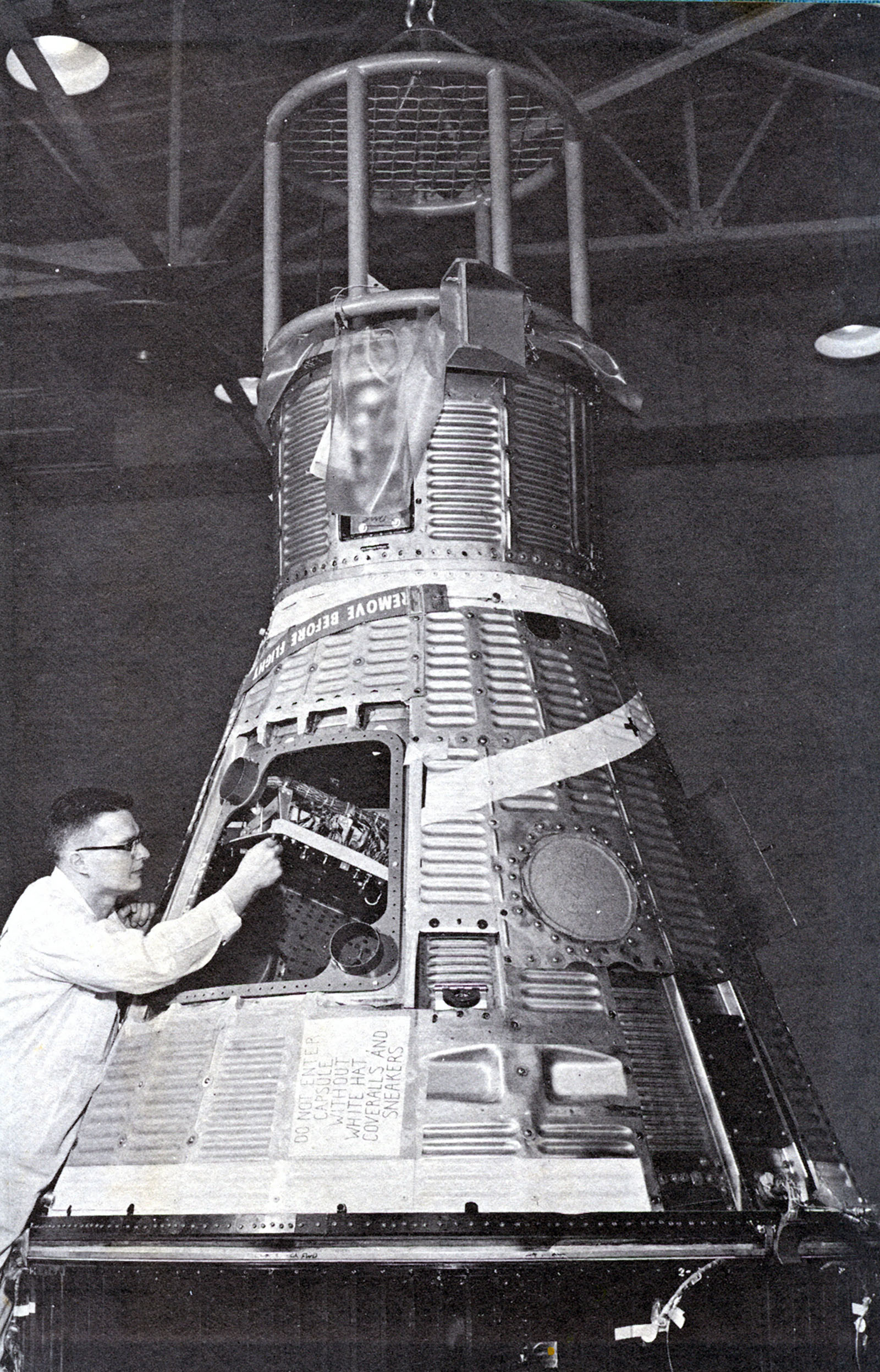
At the onset of the program, there were two government groups eager to participate. There was the Marshall Space Flight Center under Dr. Wernher von Braun, which was a mature center having more than 5000 people, and there was the small but expert Space Task Group of only a few hundred people, a group already severely loaded with the Mercury project. Mr. Webb, the Administrator, Dr. Dryden, the Deputy Administrator, and Dr. Seamans, the Associate Administrator, were the top management of the agency, and they brought onboard a young man named Brainerd Holmes to head the manned spaceflight effort in Washington. This group lost little time in deciding roles and missions for the lunar program. A new launch center was created in Florida, and Dr. Kurt Debus, formerly of Marshall, was named its head. The Marshall Center got the job of developing the huge Moon rockets, although the size of the rocket and the mode for going to the Moon had not yet been decided. The decision was made to expand the Space Task Group into a full NASA Center and assign it the job of developing the spacecraft and of creating a complex of technical facilities for spacecraft research and development, astronaut training, and flight operations. I became head of this new NASA Center in Houston. The Center facilities were authorized by Congress, but they did not yet exist. And so during the first year of Apollo the Space Task Group became the Manned Spacecraft Center and moved from Virginia to Texas. We occupied some 50-odd rented buildings while the new Center was being designed and built. It was a period of growth, organization, and growing pains. We were establishing new contractor relations, moving families and acquiring new homes, as well as conducting the orbital flights of Project Mcrcury.
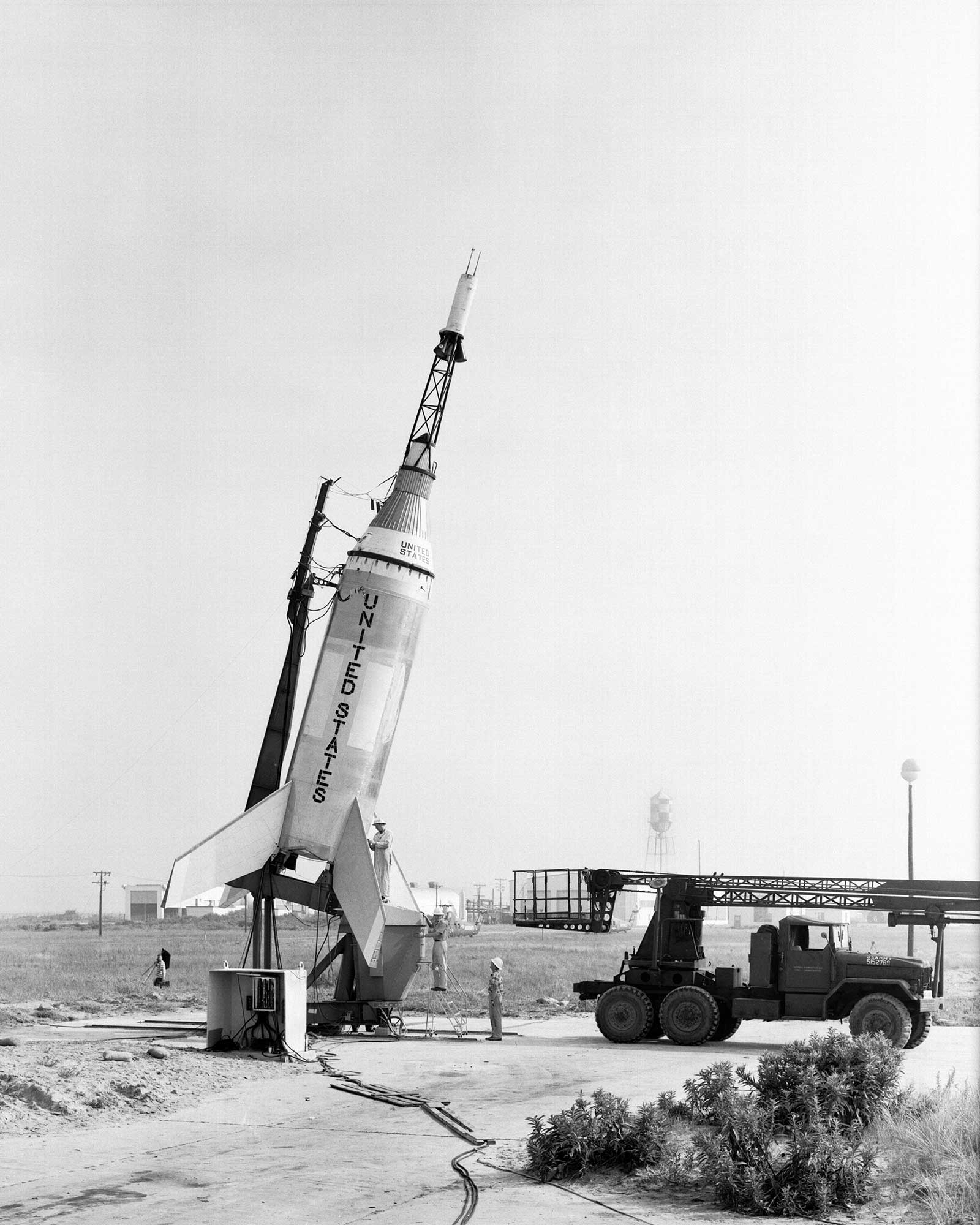
Many of the key ideas and designs for going to the Moon were created during this period of upheaval, turmoil, and the stress of major flight activities. Even before the President’s decision to land on the Moon, we had been working on designs and guidelines for a manned circumlunar mission. This was done in a series of bull sessions on how we would design the spaceship for this purpose if the opportunity occurred. Our key people would get together evenings, weekends, or whenever we could to discuss such questions as crew size and other fundamental design factors. We believed that we would need three men on the trip to do all the work required, even before the complexity of the landing was added. We believed that man would be able to stand a zero-gravity environment for the time required to go to the Moon and return. We had decided that an oxygen atmosphere of 5 pounds per square inch was the best engineering compromise for a system that would permit extravehicular activity without another module for an airlock. Other basic decisions included the selection of an onboard navigation system as well as the ground-based system, and controlled reentry to reduce g-loads and give pinpoint landings. These original guidelines for lunar flight were presented to all NASA Centers and to the aerospace industry.
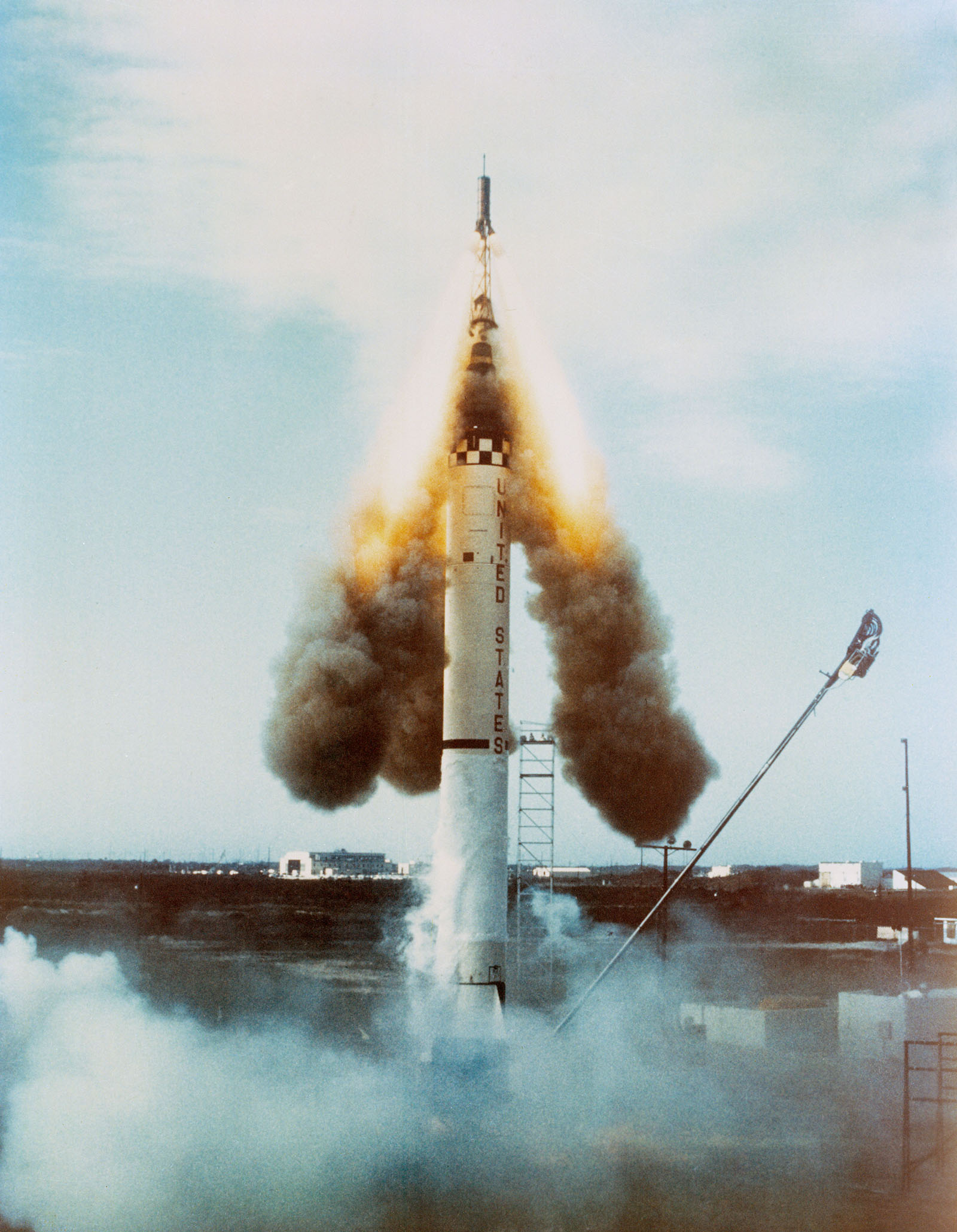
The conceptual design of the moonship was done in two phases. The command and service module evolved first as part of our circumlunar studies, and the lunar lander was added later after the mode decision was made. We were extremely fortunate that the design that evolved had such intrinsic merit. We had designed our circumlunar spaceship to have a command module containing the flight crew located on top of the stack, so that the astronauts could escape by means of an escape tower if abort were necessary during launch. The service module containing fuel for space propulsion, elec- tric power equipment, and other stores, was underneath it with its big rocket and its maneuvering systems. In the adapter below the service module, a third element of the spacecraft was located: a mission module to which the crew would transfer for special experiments. Thus when the full landing mission came along, we were able to substitute the lunar lander for this mission module. The turnaround, docking, and tunnel transfers between the command module and the lunar module were then the same ones that we had planned between the command module and the mission module.
The shape of the command module was a refinement of the Mercury capsule, optimized for the higher heating rate and the angles of attack required for controlled reentry. (One must remember that at this early time, reentry was still considered a serious problem.) Reentry from the Moon would generate heating rates twice as great as those in vehicles returning at orbital speed. Experts had warned us that shock-wave radiation would be an additional source of heating. Our studies showed that the blunt body was still the optimum shape, although the afterbody shape should be more highly tapered than in the Mercury capsule. As it turned out, our flights to the Moon showed that the Apollo design was very conservative, particularly on the afterbody, and the margins of safety for the astronauts in returning from the Moon were comfortably large. Max Faget, Caldwell Johnson, and others of the Manned Spacecraft Center were largely responsible for putting down the original lines of the Apollo command module. They also suggested the internal arrangement.
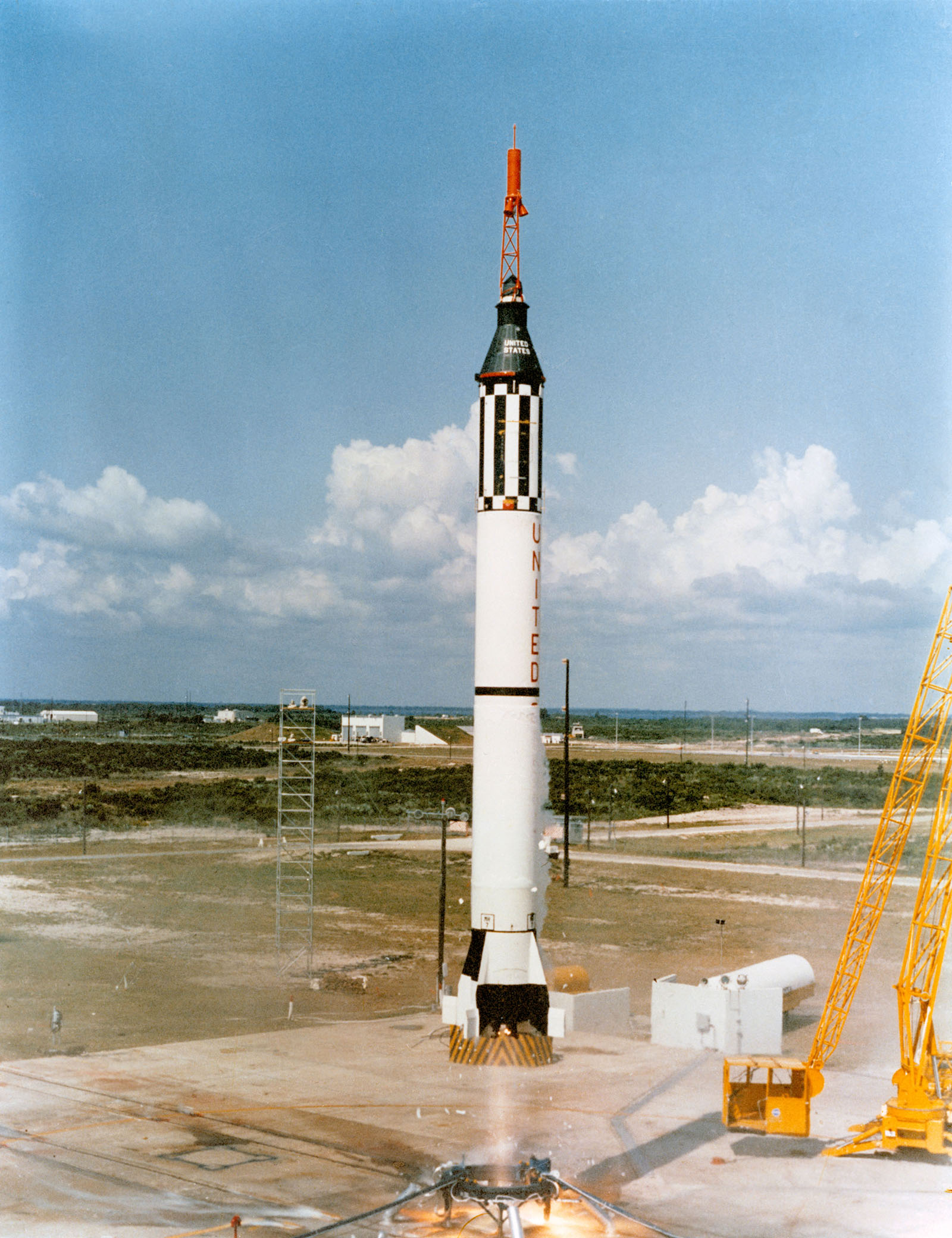
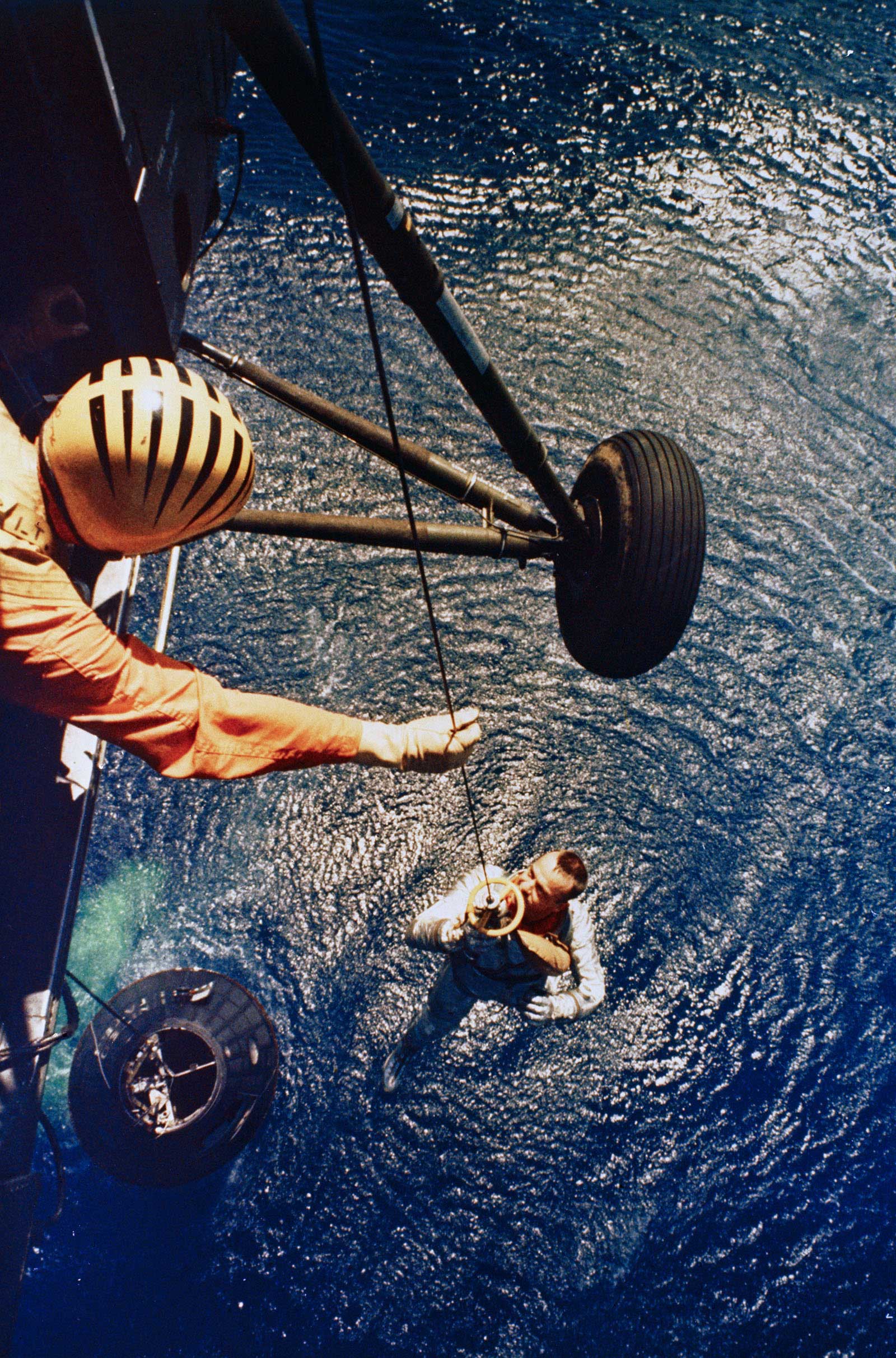
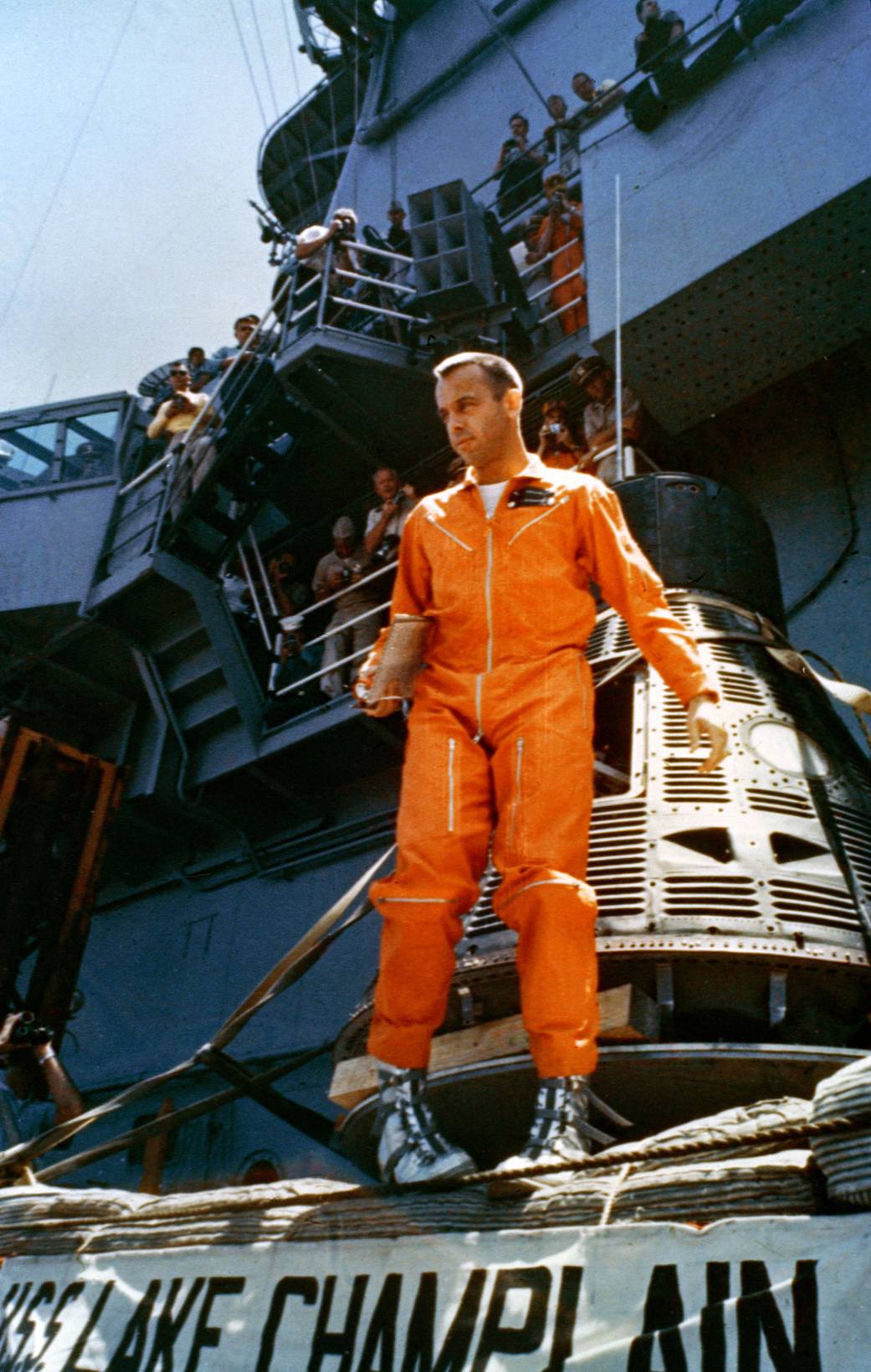
All during the early planning for the lunar missions, I had been greatly concerned about the effects of solar radiation on the astronauts. Experts were not all in agreement as to the amount of radiation that might be received on a mission to the Moon. I remember George Low stating that the normal shielding of the cabin walls, together with the low probability of intense solar activity, would alleviate this hazard. He was right and the radiation experienced by astronauts on trips to the Moon was of no medical significance. Navigation in space might have been a serious problem had not Stark Draper and his group at MIT gotten an early start. They were brought in under contract to devise a system for Apollo back in 1961. Working with their industrial partners, they produced a system that was amazingly accurate.
The pieces of the master plan were now beginning to fit together. In the fall of 1961, North American Aviation had won the contract for the Apollo command and service module. The basic designs of the service propulsion engine, the reaction control system, and the fuel cells were underway, but there were still major technical areas to be settled. One of these was the launch-vehicle design. As a result of many studies, the large rocket originally proposed had lost its backers. Dr. von Braun and the Huntsville team were zeroing in on a rocket of intermediate size. This rocket was to use five of the huge F-1 engines on the first stage and a new hydrogen-oxygen engine in the upper stages. It could easily be sized to send more than 90,000 pounds on a course to the Moon. We in Houston strongly supported this design, which was later called the Saturn V. Only one rocket vehicle of this size would be required to send our spacecraft to the Moon, if we used the lunar-orbit rendezvous technique. Getting official approval for the lunar-orbit rendezvous was, however, to take considerable time and effort. Brainerd Holmes, chosen by Webb to head Apollo in Washington, strongly favored Earth-orbit rendezvous. This mode would use dual launchings of the huge Saturn V rockets, joining them together in orbit and pumping fuel from one to refill the other; and then realigning and lighting off that rocket to the Moon. In this way, much larger payloads could be flown to the Moon than by a single rocket, but the technical and operational problems seemed to me to be overwhelming.
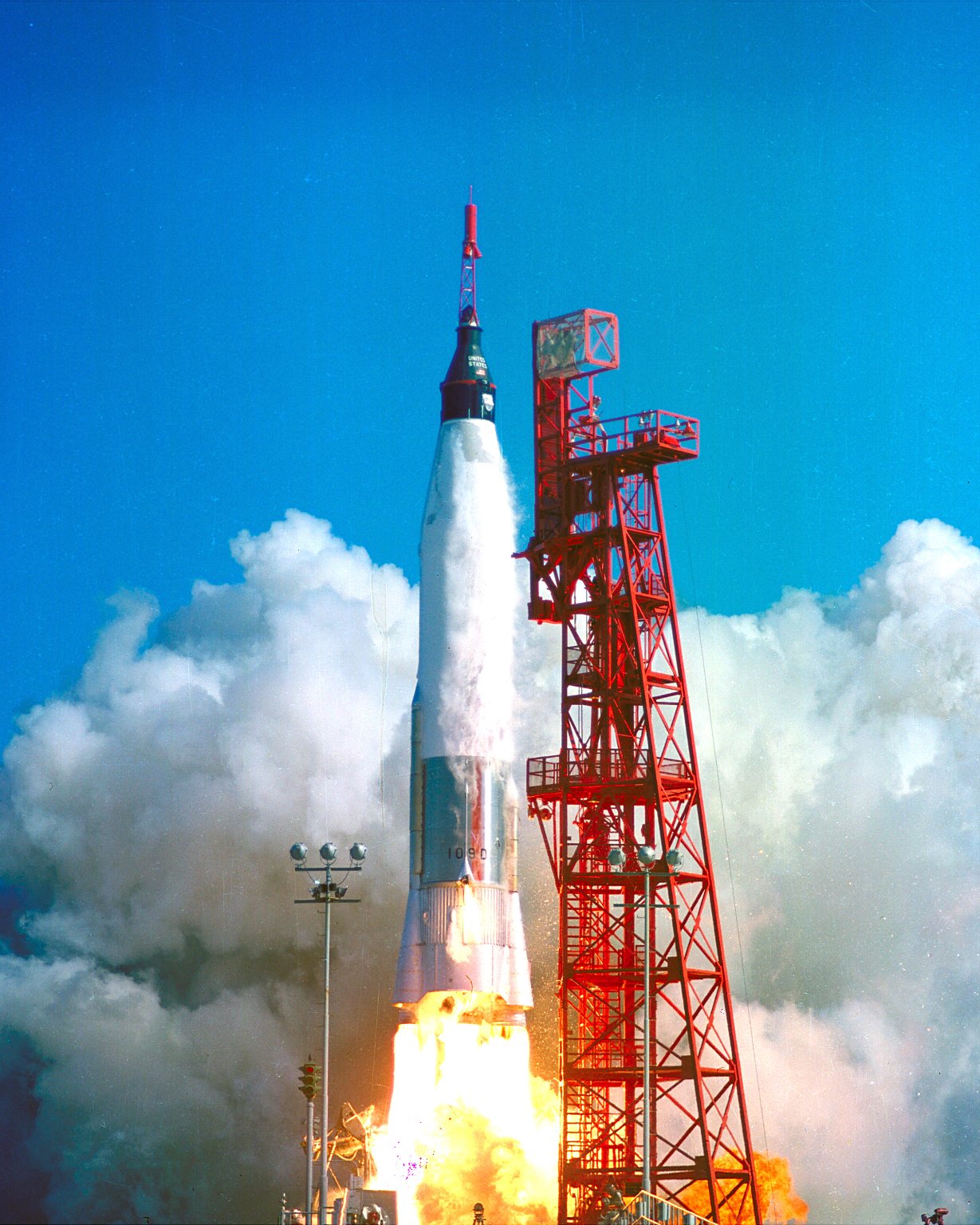
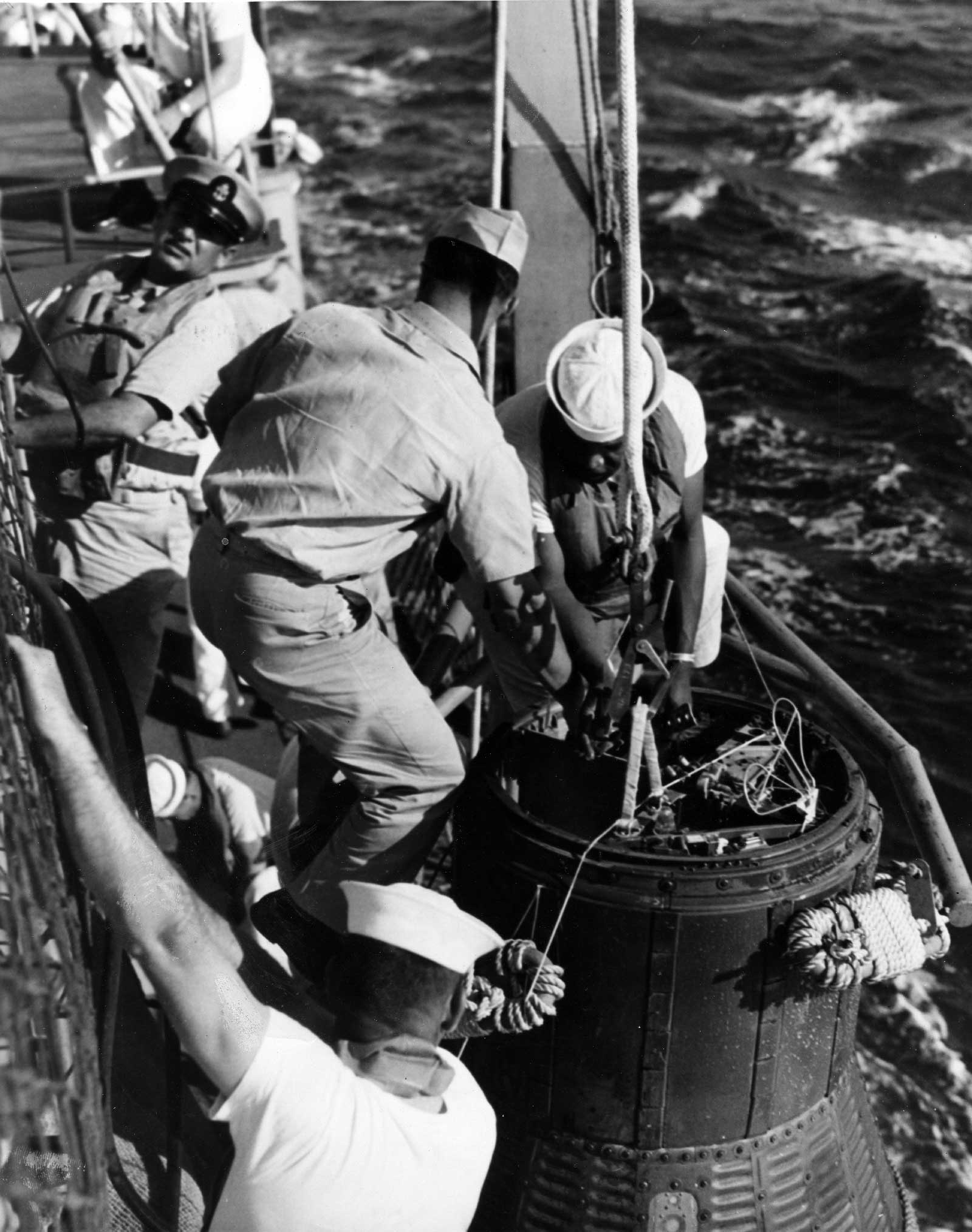
In contrast, I believed in and supported lunar-orbit rendezvous. In this mode, the lander leaves the mother ship in lunar orbit and goes down to the Moon’s surface. Upon returning to lunar orbit, it links up with the mother ship and the astronauts transfer to the command module and return to Earth for reentry and landing. Lunar-orbit rendezvous was espoused by John Houbolt, chairman of the group that studied this plan at the Langley Research Center. When I heard of this plan, I was convinced that this was the way to go. It required far less weight injected toward the Moon, but even more important, in my view, was the fact that one spacecraft could be designed specifically for lunar landing and takeoff, while the other could be designed for flying to and from the Moon and specifically for reentry and Earth landing. An additional bonus was that it allowed the tremendous industrial job to be divided between two major contractors since there would be two spacecraft, thereby giving each one a more manageable task.
By the late fall of 1961, all of us at the new Manned Spacecraft Center were unified in support of lunar-orbit rendezvous and were working tooth and nail to find out all we could about lunar landers, rendezvousing, and the tradeoffs to be made. In December of 1961 we made an earnest appeal to Brainerd Holmes to approve Lunar-orbit rendezvous. He could not be convinced at that time, however, and only six months later was the final decision made. Much of the credit for selling the lunar-orbit mode must be given to the Houston people. Charles Frick, who was our Apollo Spacecraft Manager at that time, was particularly effective. Studies conducted by Frick’s people converted first the key engineers at the Marshall Space Flight Center, including Drs. Rees and von Braun, and, finally, Brainerd Holmes. Dr. Joe Shea, Holmes’ assistant, then carried the decision on to higher echelons of the Government. Mr. Webb approved the lunar-orbit plan and only Dr. Wiesner and a few others of the President’s Science Advisors remained unconvinced. However, the White House accepted Mr. Webb’s decision.
We were extremely fortunate during this period to have Brainerd Holmes in charge of the Apollo program. He encouraged the key center leaders to work together by establishing a management council with regular meetings. During these meetings, we argued out our different opinions and developed into a management team. A less skillful leader might have forced an early arbitrary decision that would have made the whole task of getting to the Moon virtually impossible.
Our Administrator, Mr. Webb, now had a master plan. It consisted of the giant three-stage launch vehicle, the Saturn V. There would be a command module with three astronauts onboard. The command module would be a blunt body, properly shaped and ballasted for controlled gliding reentry. It would use ablative material for the heat shield and would land at sea with parachutes. A separate service module would carry the space-propulsion engine, attitude-control jets, the fuel cells for electric power, together with supplies of fuel and oxygen. There would be a lunar-landing stage designed specifically for the job of landing on the Moon. It would carry two men down to the Moon’s surface and back to rendezvous with the mother ship in orbit. In simple terms, this was the technical plan for Apollo, and it was to need no change as it went forward in development. All of this had been decided within one year after the President’s announcement. Less than six months later, Grumman had won the contract to build the lunar lander.
One major element of basic program planning was still missing. How were we to bridge the tremendous gap between the simple Mercury Earth-orbital program and the Apollo voyage to the Moon? We needed a chance to train our men in many new elements of spaceflight, and we needed an engineering prototype for our ideas as well. The answer was Project Gemini.
GEMINI PROGRAM
The Gemini program was designed to investigate in actual flight many of the critical situations which we would face later in the voyage of Apollo. The spacecraft carried an onboard propulsion system for maneuvering in Earth orbit. A guidance and navigation system and a rendezvous radar were provided to permit astronauts to try out various techniques of rendezvous and docking with an Agena target vehicle. After docking, the astronauts could light off the Agena rocket for large changes in orbit, simulating the entry-into-lunar-orbit and the return-to-Earth burns of Apollo. Gemini was the first to use the controlled reentry system that was required for Apollo in returning from the Moon. It had latches that could be opened and closed in space to permit extravehicular activity by astronauts, and fuel cells similar in purpose to those of Apollo to permit flights of long duration. The spacecraft was small by Apollo standards, carrying only two men in close quarters. However, the Titan II launch vehicle, which was the best available at that time, could not manage a larger payload.
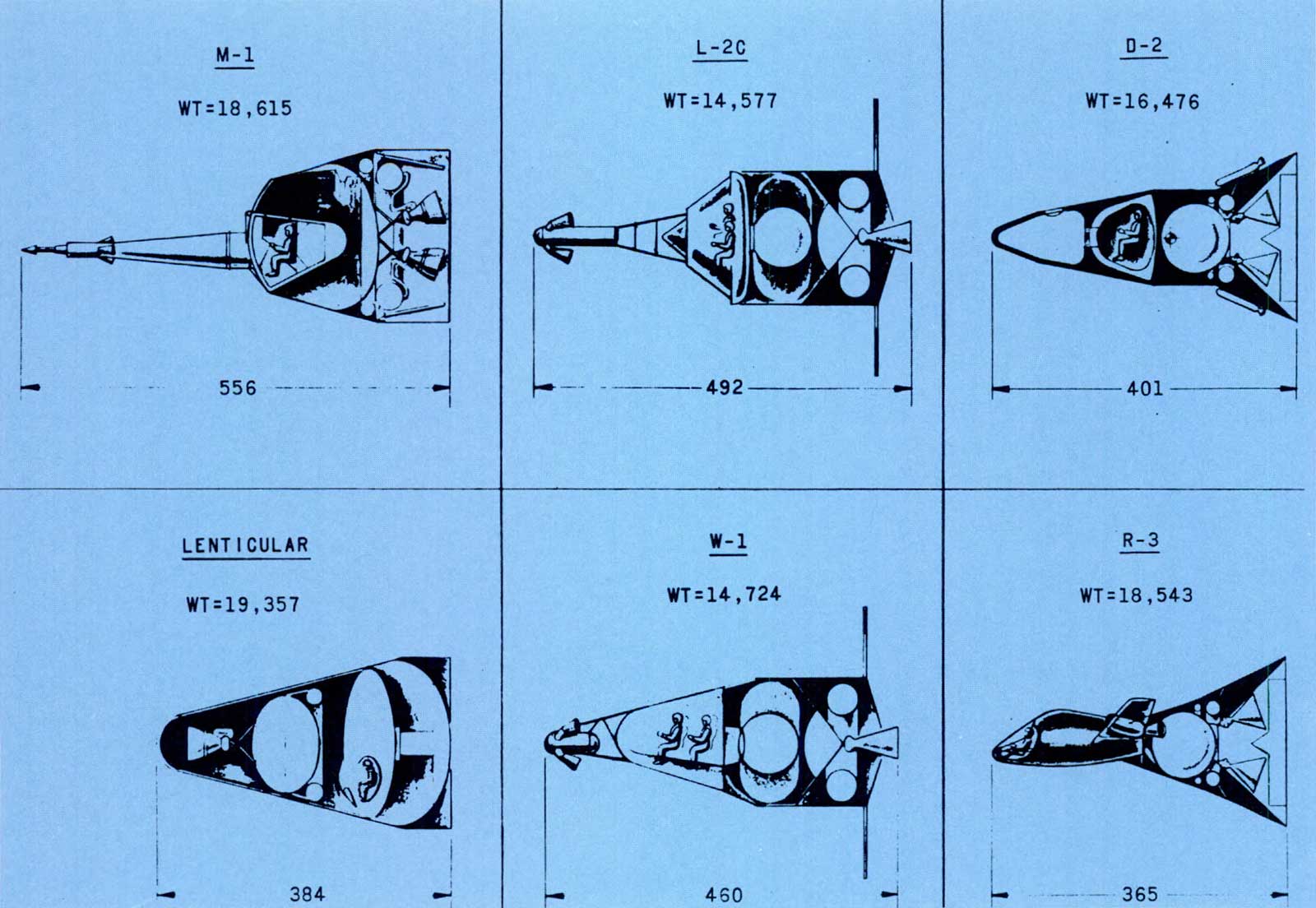
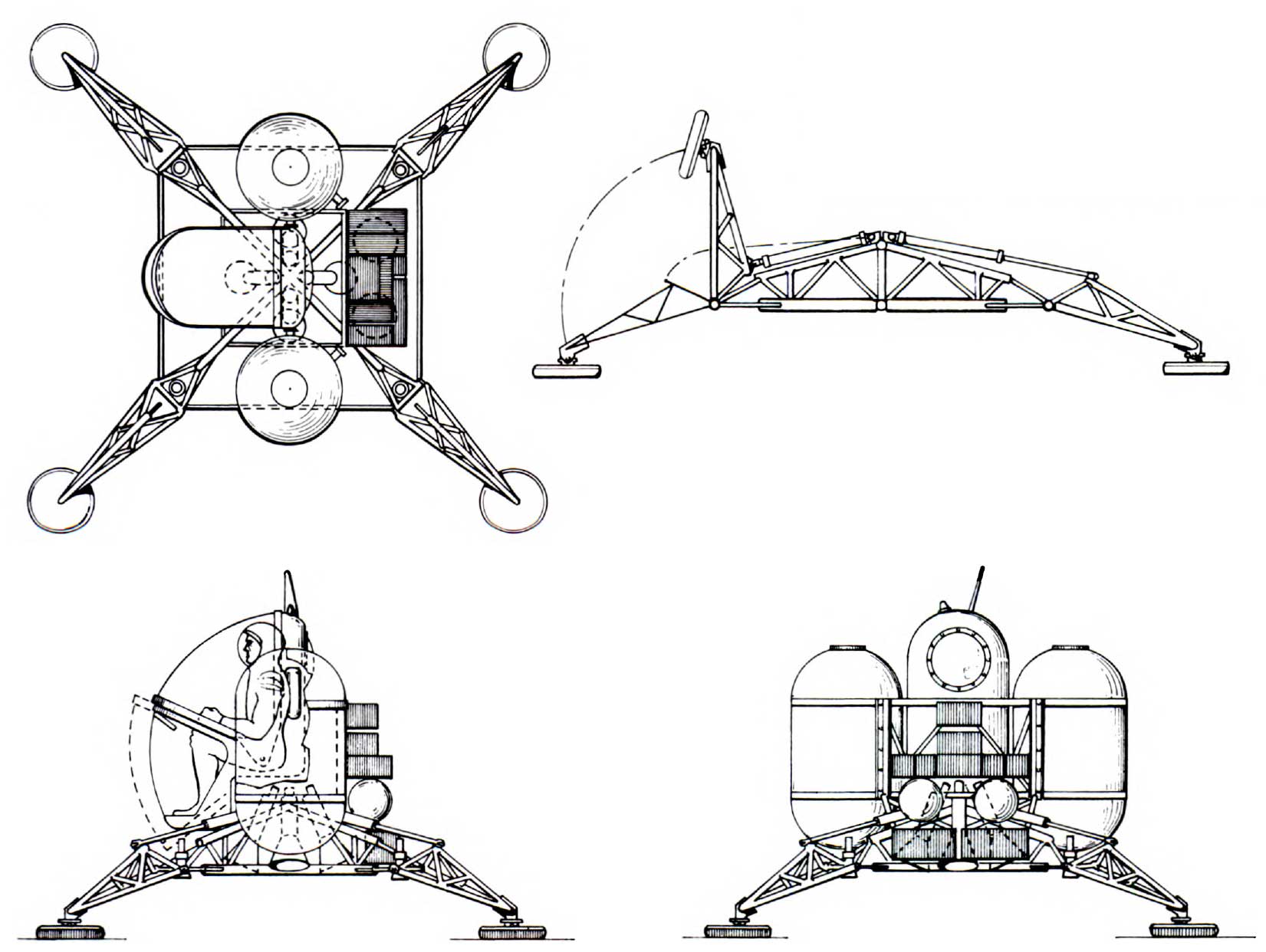
A total of 10 manned flights were made in the Gemini program between March 1965 and November 1966. They gave us nearly 2000 man-hours in space and developed the rendezvous and docking techniques essential to Apollo. By burning the Agena rockets after docking, we were able to go to altitudes of more than 800 nautical miles and prove the feasibility of the precise space maneuvers essential to Apollo. Our first experience in EVA was obtained with Gemini and difficulties here early in the program paved the way for the smoothly working EVA systems used later on the Moon. The Borman and Lovell flight, Gemini VII, showed us that durations up to two weeks were possible without serious medical problems, and the later flights showed the importance of neutral buoyancy training in preparation of zero-gravity operations outside the spacecraft.
Gemini gave us the confidence we needed in complex space operations, and it was during this period that Chris Kraft and his team really made spaceflight operational. They devised superb techniques for flight management, and Mission Control developed to where it was really ready for the complex Apollo missions. Chris Kraft, Deke Slayton, head of the astronauts, and Dr. Berry, our head of Medical Operations, learned to work together as a team. Finally, the success of these operations and the high spaceflight activity kept public interest at a peak, giving our national leaders the broad supporting interest and general approval that made it possible to press ahead with a program of the scale of Apollo.
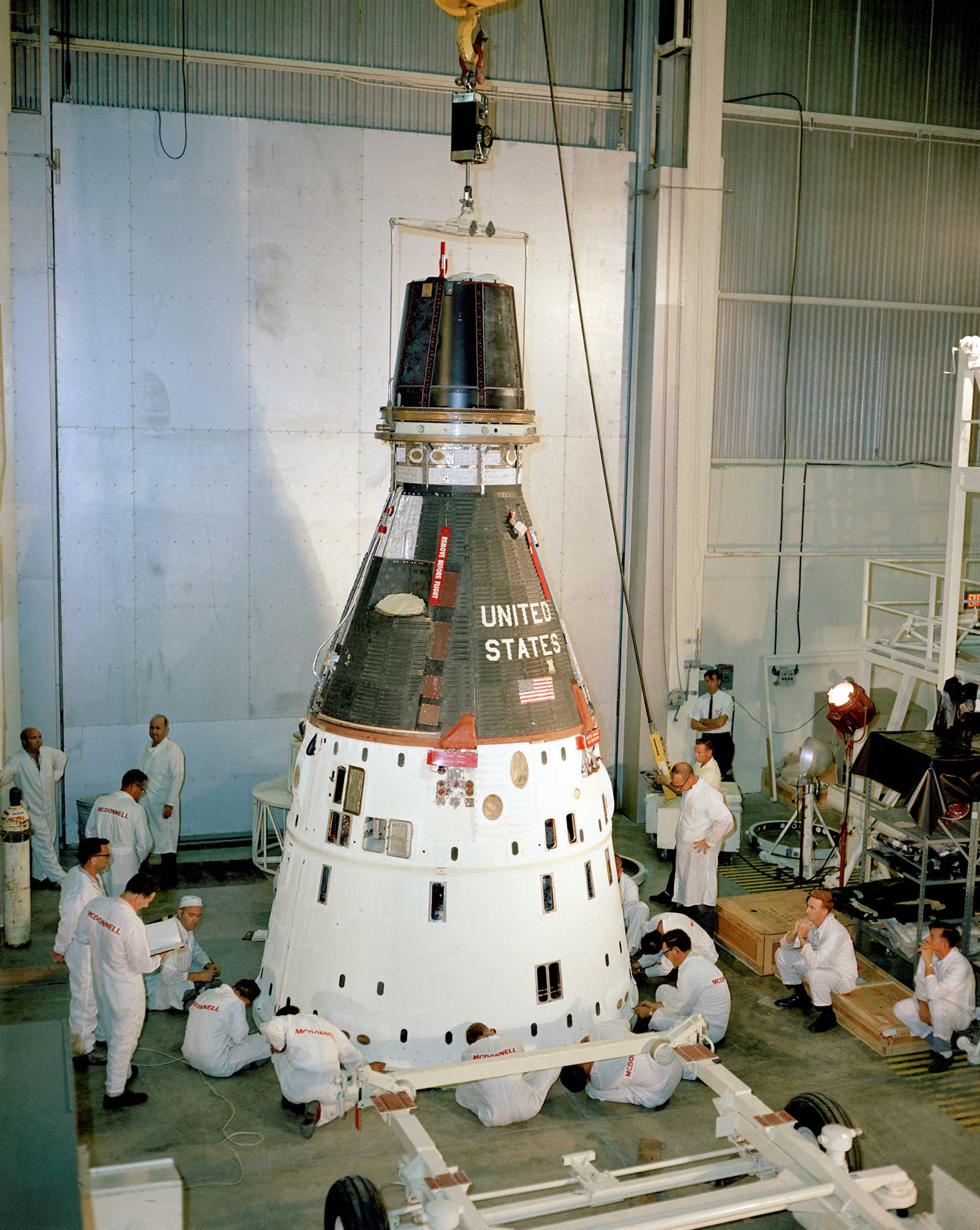
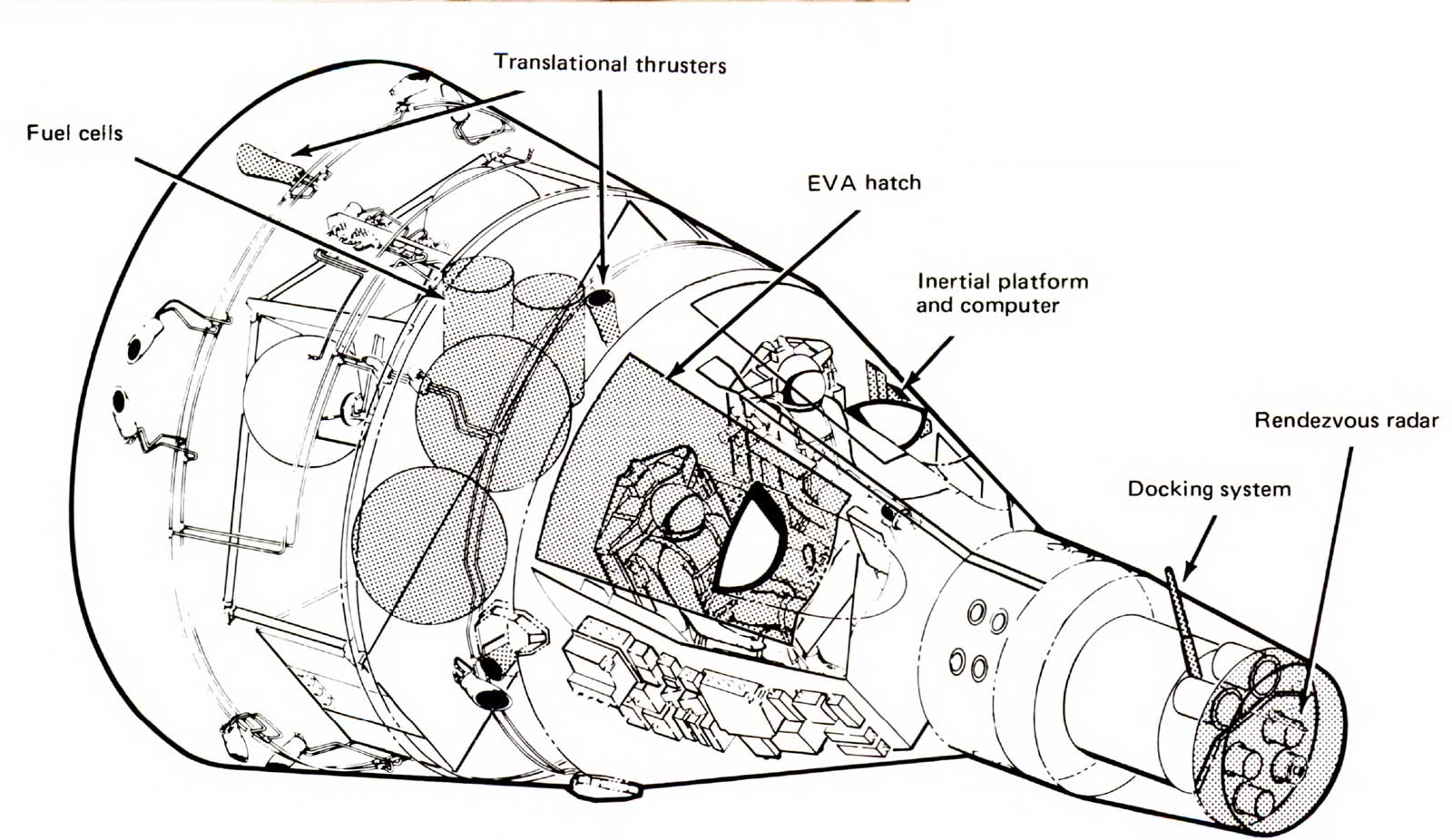
THE PLAN IN RETROSPECT
In thinking back over the flights of Apollo, I am impressed at the intrinsic excellence of the plan that had evolved. I have, of course, somewhat oversimplified its evolution, and there were times when we became discouraced, and when it seemed that the sheer scope of the task would overwhelm us in some areas there were surprises and other areas proceeded quite naturally and smoothly.
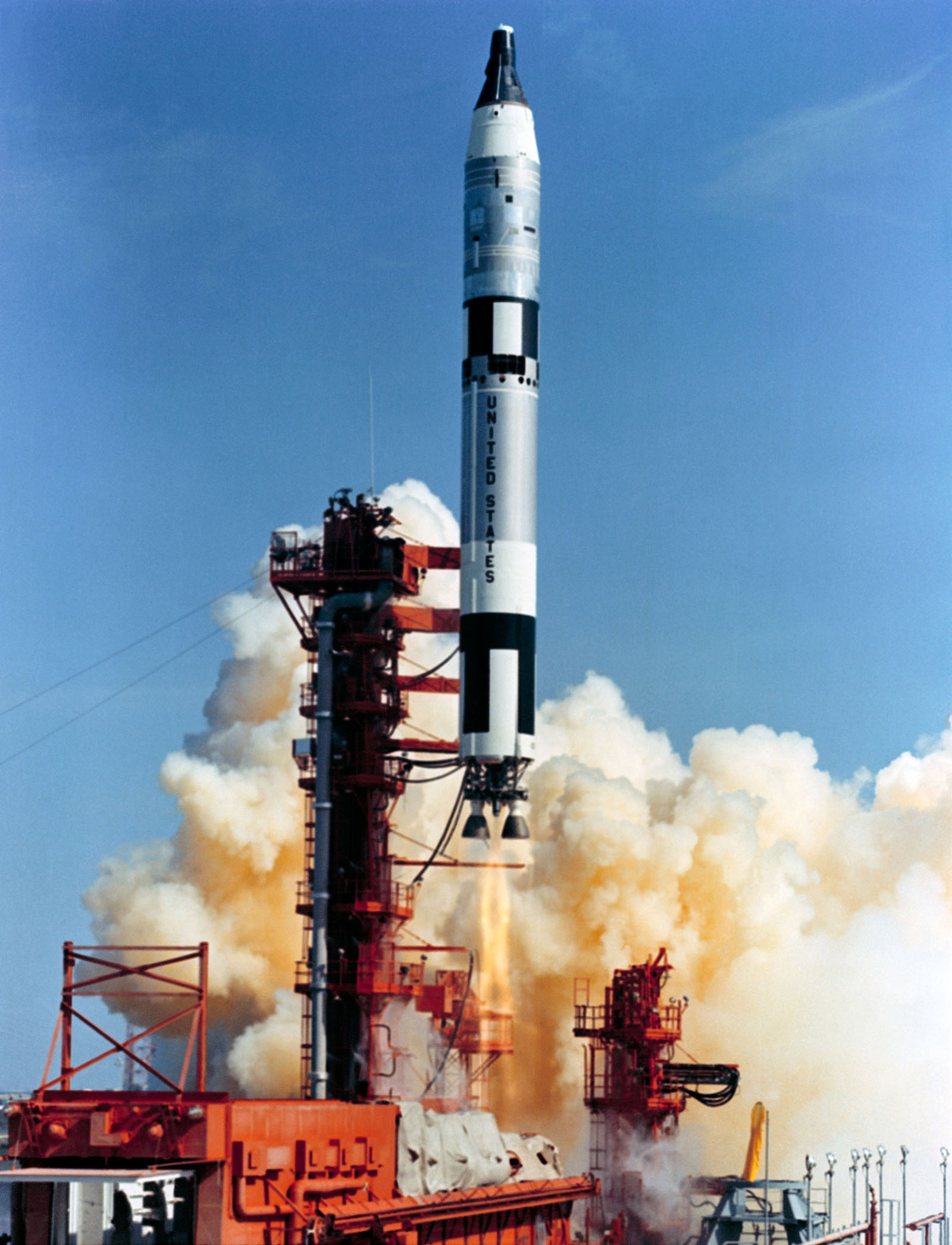
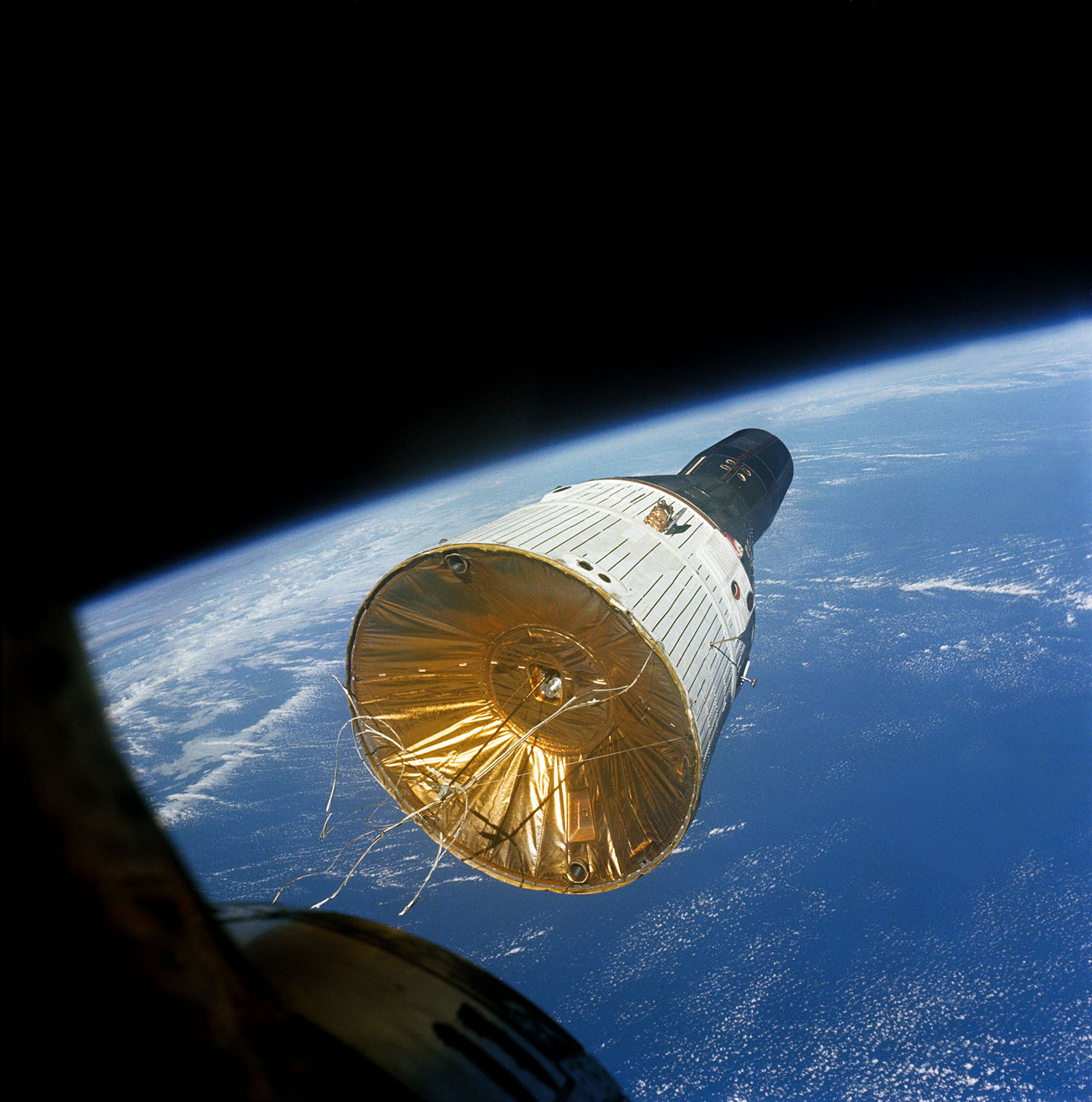
The most cruel surprise in the program was the loss of three astronauts in the Apollo fire, which occurred before our first manned flight. It was difficult for the country to understand how this could have occurred, and it seemed for a time that the program might not survive. I believe that the self-imposed discipline that resulted, and the ever-greater efforts on quality, enhanced our chances for success, coming as they did while the spacecraft was being rebuilt and final plans formulated.
The pogo problem was another surprise. Like the fire, it showed how difficult it was to conquer this new ocean of space. Fortunately, intensive and brilliant work with the big Saturns solved the problem with the launch rocket, permitting the flights to proceed without mishap.
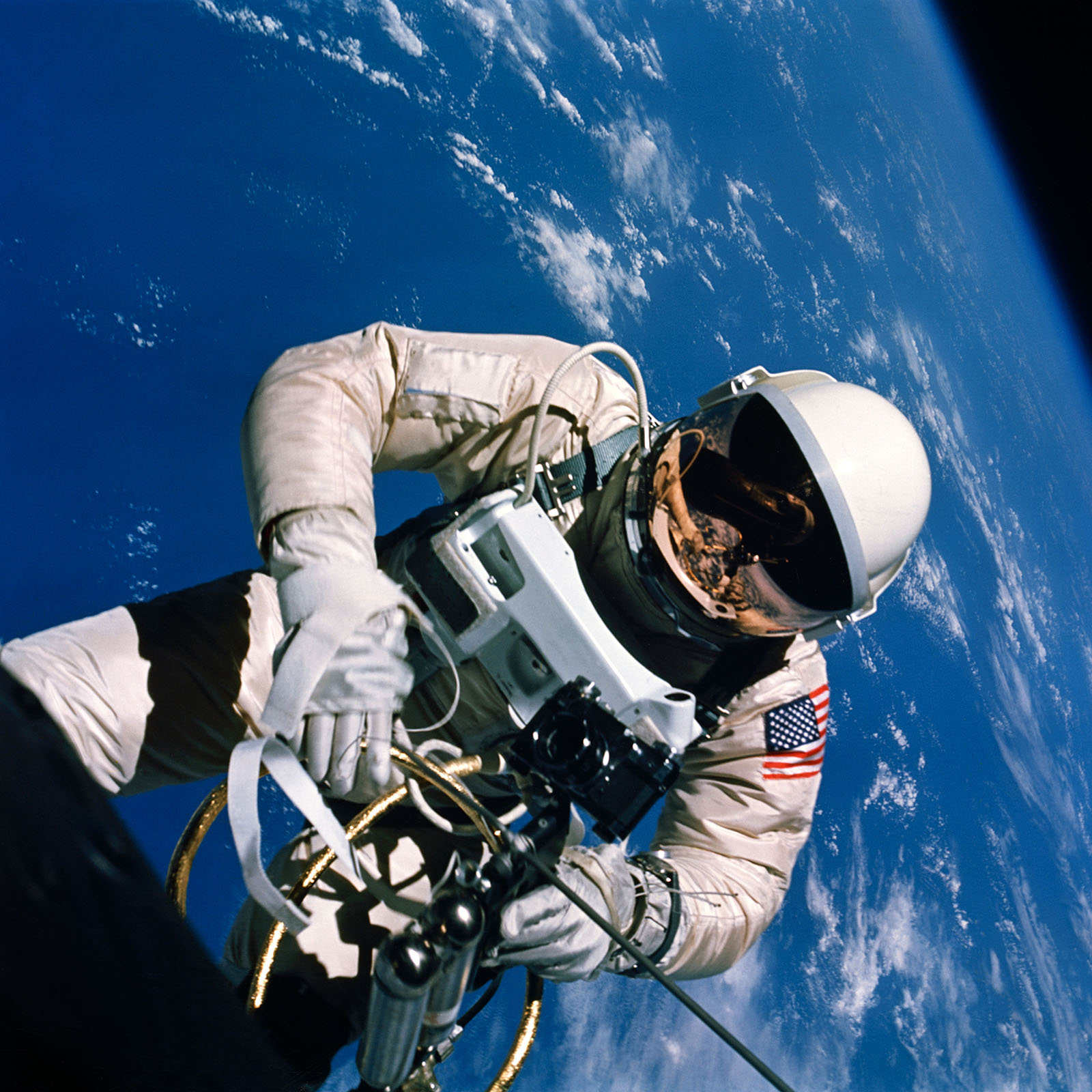
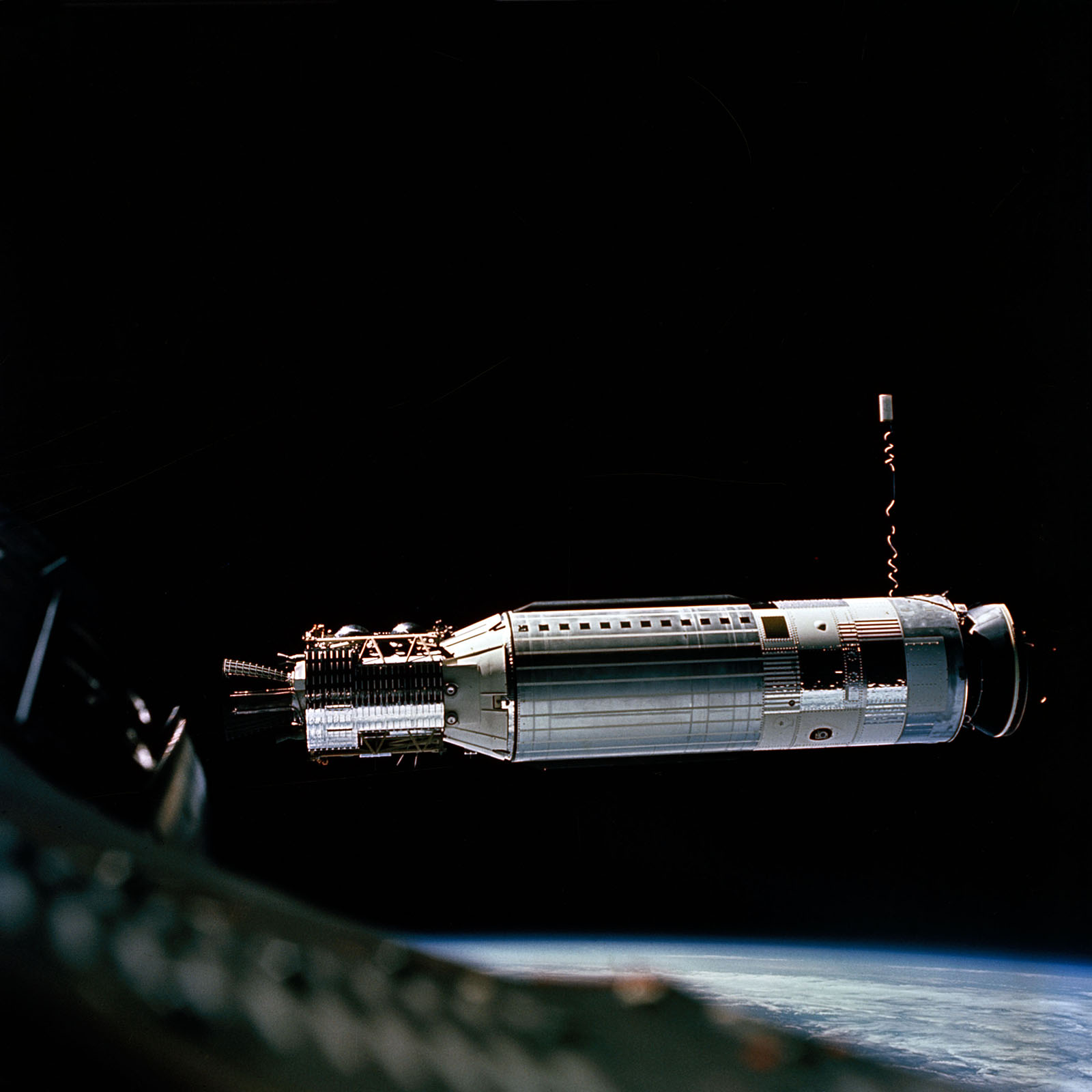
We had planned a buildup of our flights, starting with a simple Earth-orbit flight of the command and service modules (Apollo 7), to be followed by similar trials with the lunar module (LM) added, for tests of rendezvous and docking and various burns of the LM engines (Apollo 9). These tests would have then been followed by flights to Lunar orbit with the LM scouting the landing but not going all the way in (Apollo 10), and then the landing (Apollo 11).
After Apollo 7, however, the LM was not yet ready and the opportunity occurred to fly to the Moon with command and service module (CSM) only. This flight (Apollo 8) was to give us many benefits early in the progam. Technically, it gave us information on our communication and tracking equipment for later missions, a close view of our landing sites, and experience in cislunar space with a simplified mission. Politically, it may have assured us of being first to the Moon, since the stepped-up schedule precluded the Russians from flying a man around the Moon with their Zond before we reached the Moon following our previously scheduled missions.
The flights came off almost routinely following Apollo 8 on through the first lunar landing and the flight to the Surveyor crater. But Apollo 13 was to see our first major inflight emergency when an explosion in the service module cut off the oxygen supply to the command module. Fortunately, the LM was docked to the CSM, and its oxygen and electric power, as well as its propulsion rocket, were available. During the 4-day ordeal of Apollo 13, the world watched breathlessly while the LM pushed the stricken command module around the Moon and back to Earth. Precarious though it was, Apollo 13 showed the merit of having separate spacecraft modules, and of training of flight and gound crews to adapt to emergency. The ability of the flight directors on the ground to read out the status of flight equipment, and the training of astronauts to meet emergencies, paid off on this mission.
Apollo surely is a prototype for explorations of the future when we again send men into space to build a base on the Moon or to explore even farther away from Earth.